Ancient Ephesus is thought to be Turkey’s most important archeological site and one of the world’s most well preserved Greco-Roman cities.
Ancient Ephesus is one of the largest and most impressive ancient cities in the world. The remains of the city is located just 80 km inland from the seaside city of Izmir, Turkey. Ephesus was built in the 10th century BC and came under Roman rule in 133 BC, then became the Capital of Asia Minor in 27 BC. As the city flourished, it became the second most important city within the Roman Empire, only behind Rome, Italy.
The site has not been completely excavated and some of the current excavations can be seen while walking through the site. Most of what is seen today comes from the later periods of the city. There are two main entrances into the city and tourist can enter from either direction. The highlights of the city are shown in order that they are seen while entering from the direction of the Gate of Mazeus and Mythridates (harbor side).
The street that leads into the city is the Arcadian Avenue. The Great Theater is on the left side of the street before passing entrance gate into the city.
The Great Theater
The great theater had a capacity of 25,000 people and is one of the largest theater in the ancient world. It was used for plays, concerts and discussions but there is evidences that it was also used for gladiator fights during the Roman times.
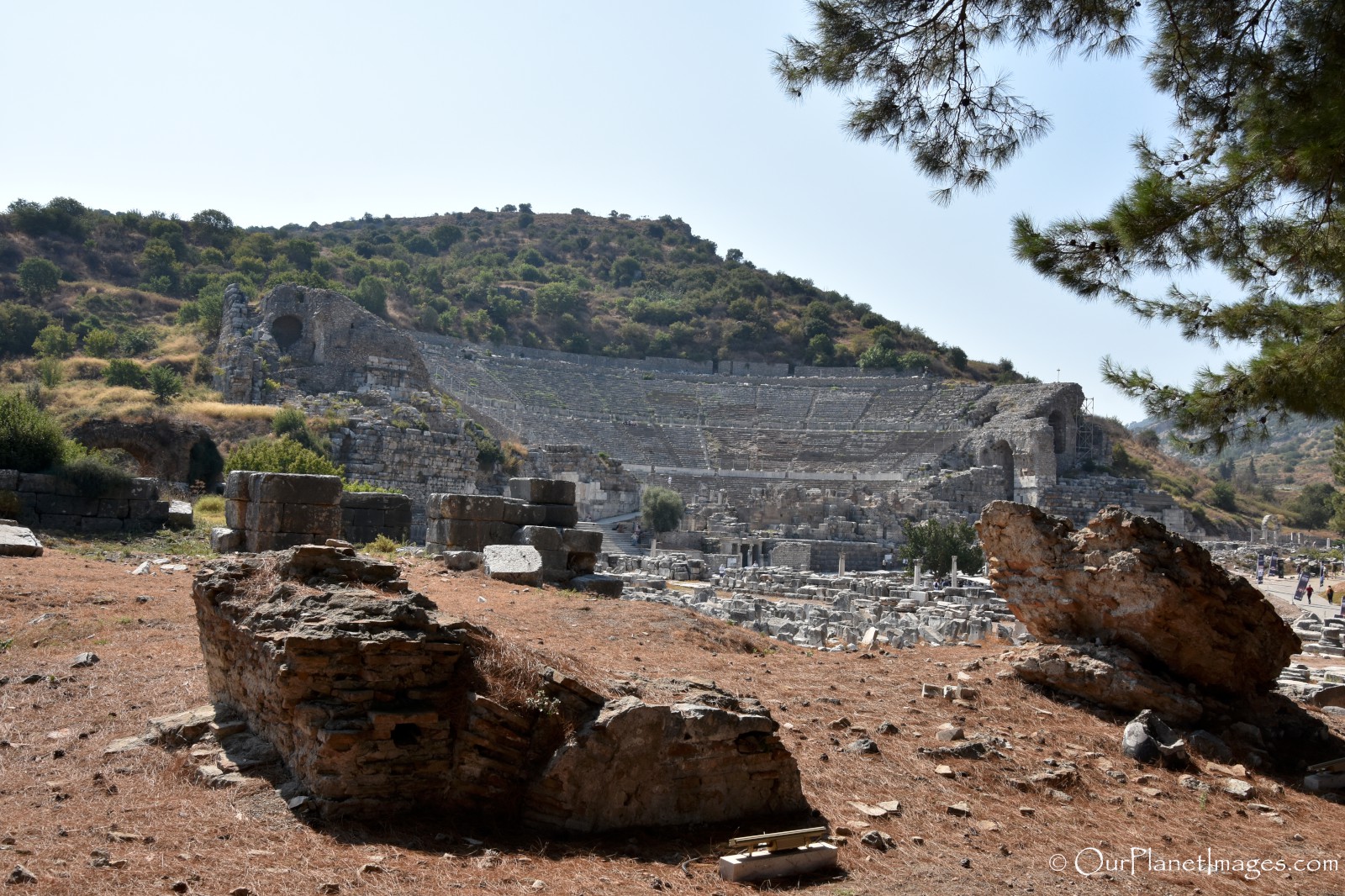
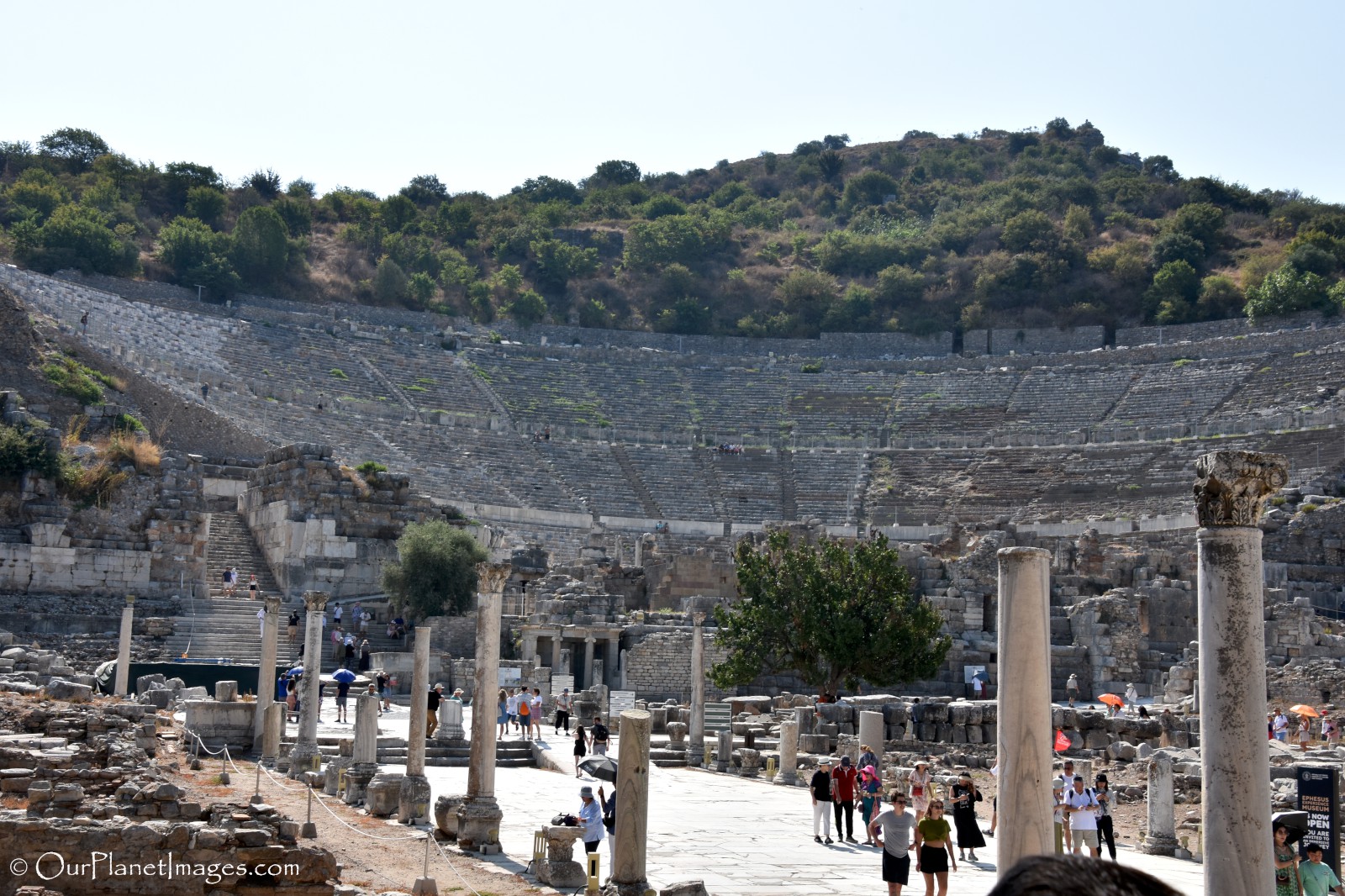
The Gate of Mazeus and Mythridates
This gate was built in 40 AD in honor of Emperor Augustus. The photo below is from outside the gate when approaching the city.
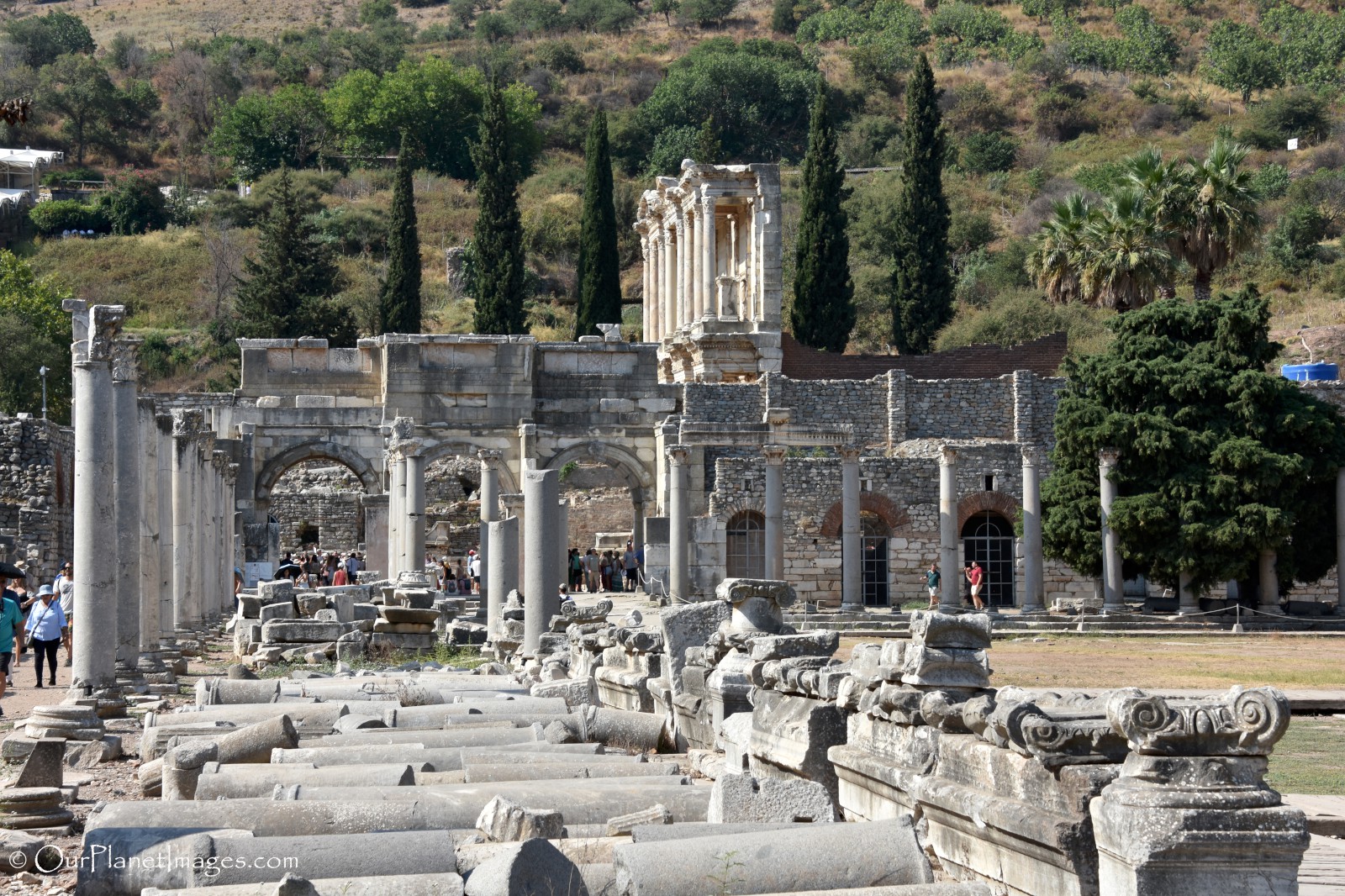
The photos below are after passing through the gate and standing in the plaza in front of the Library of Celsus.
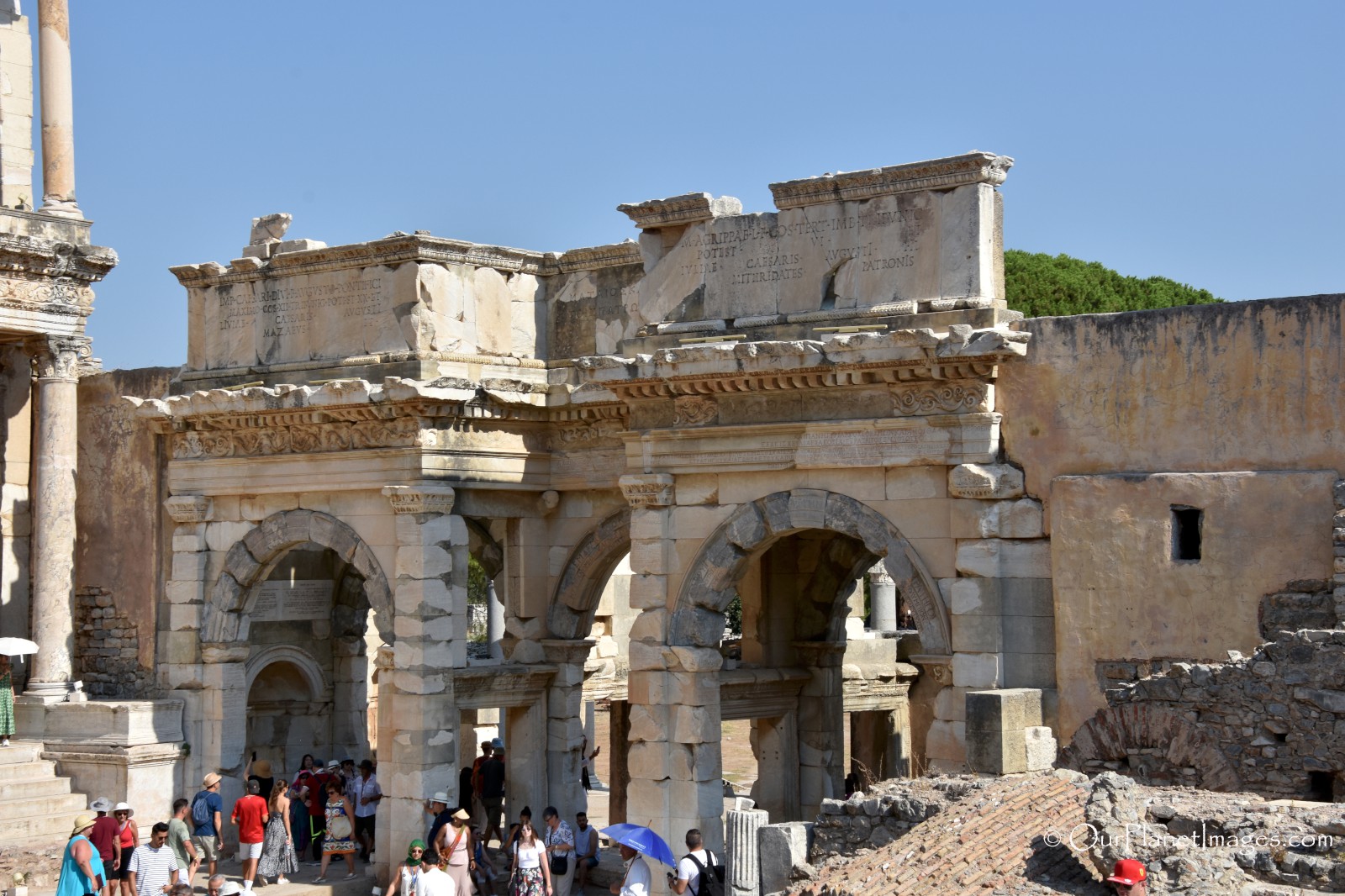
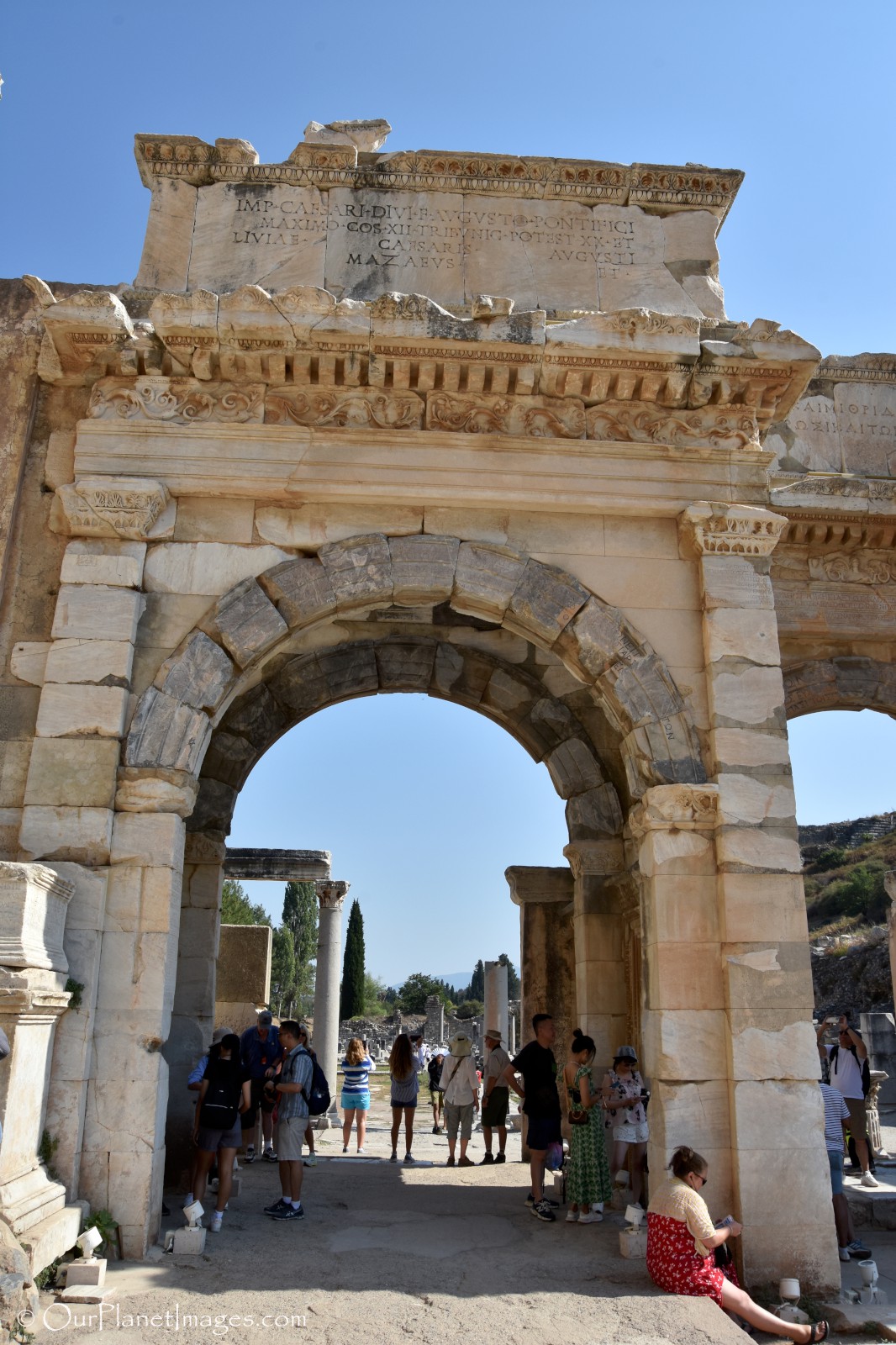
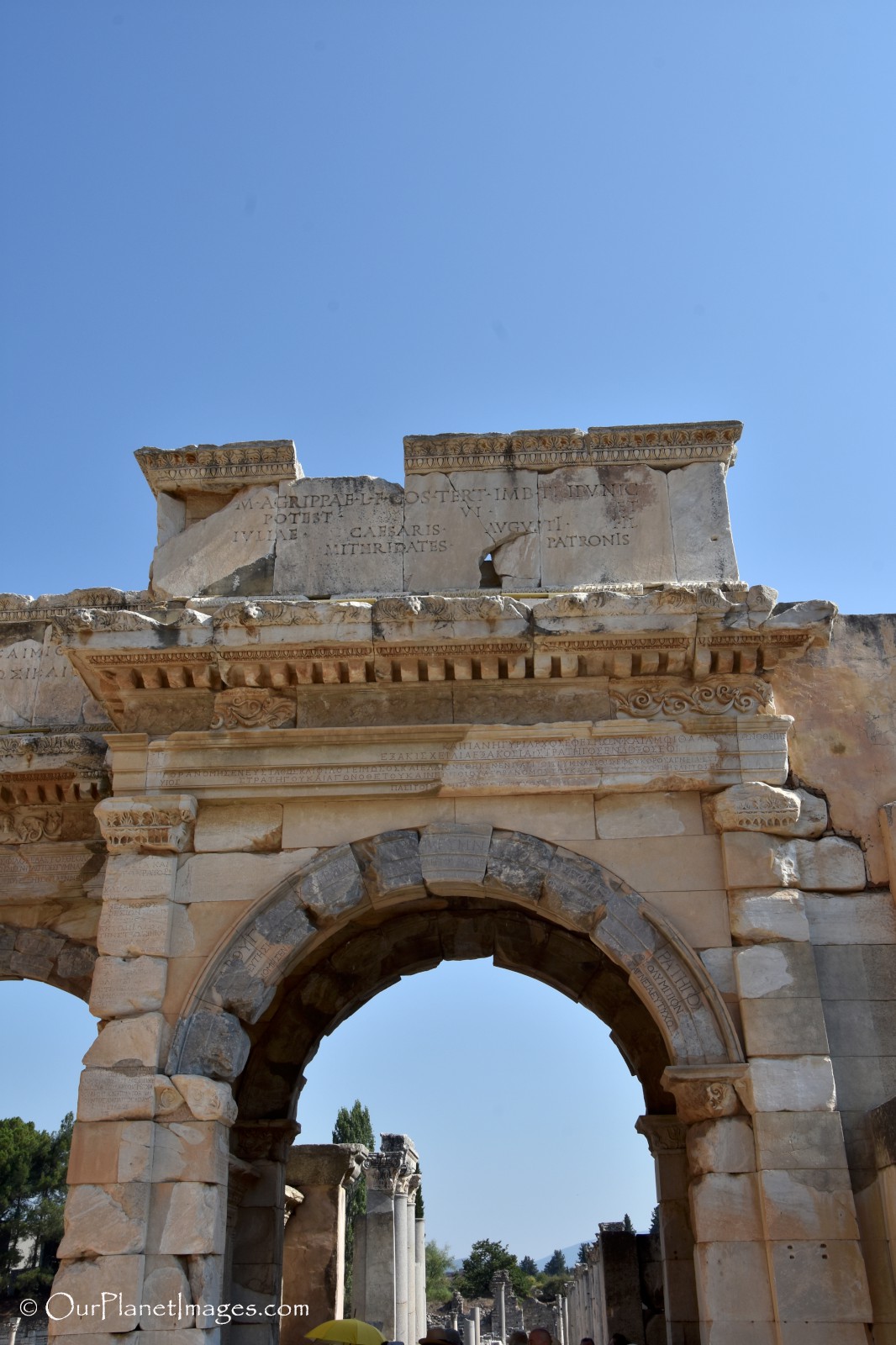
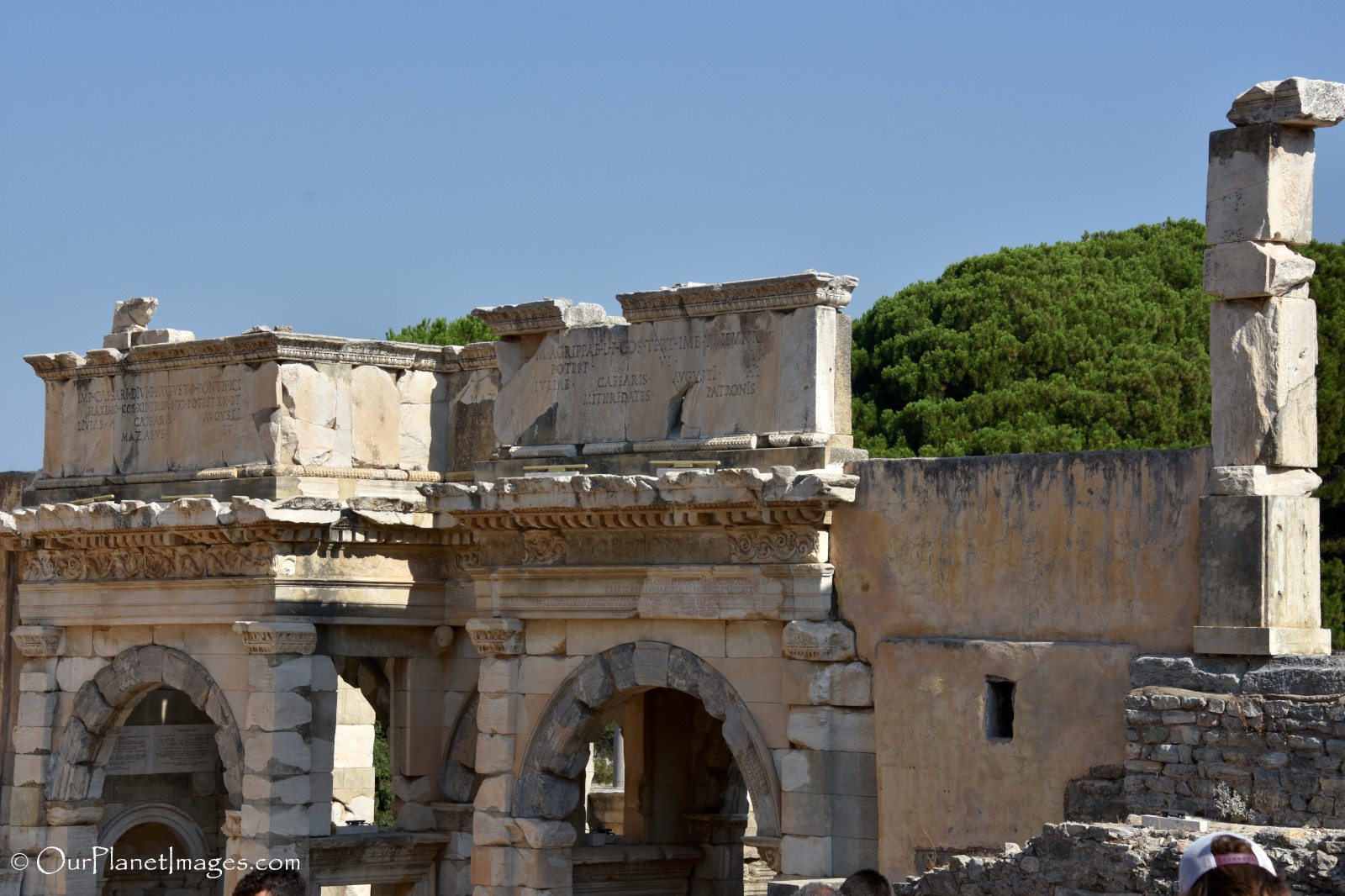
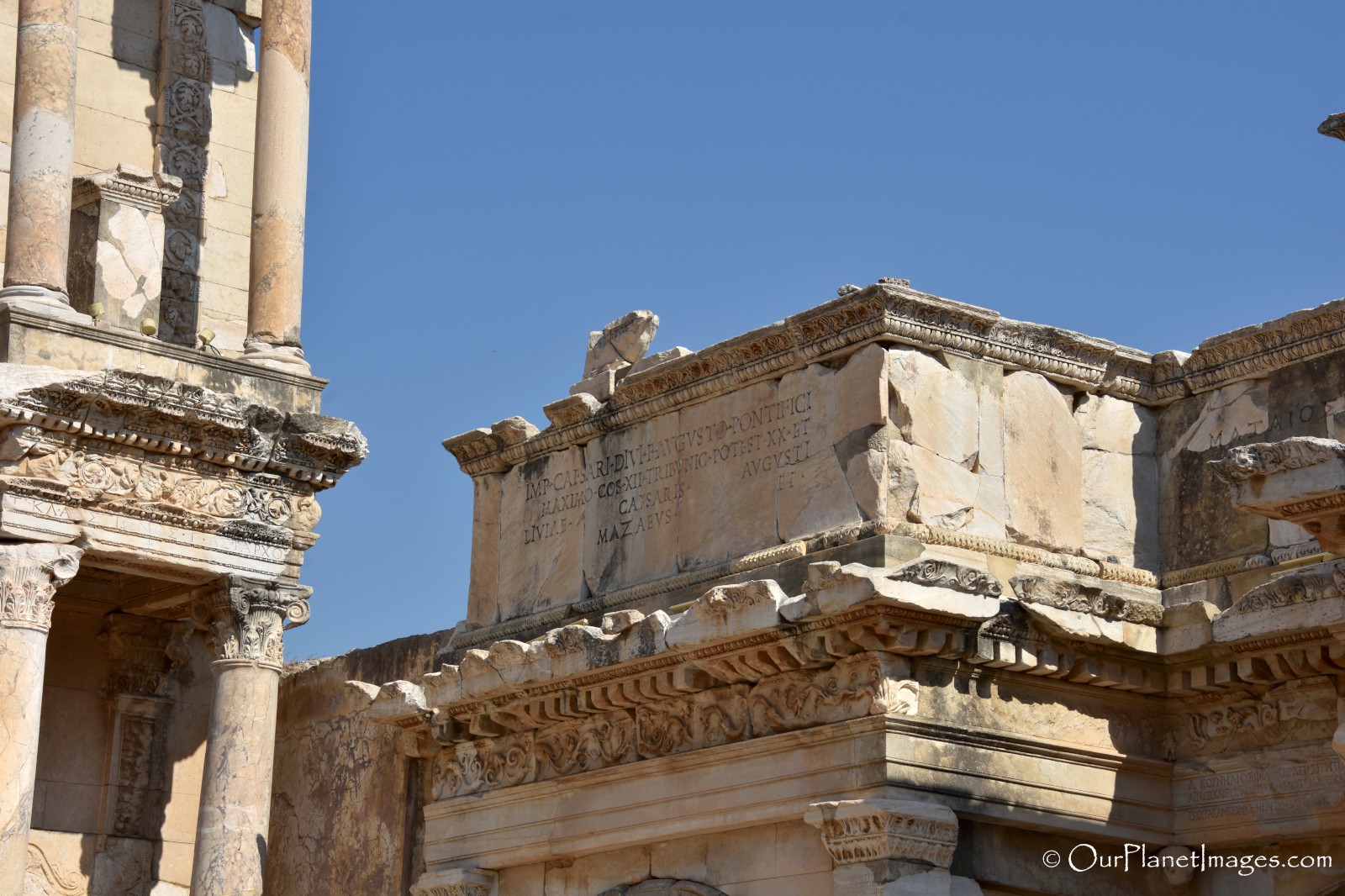
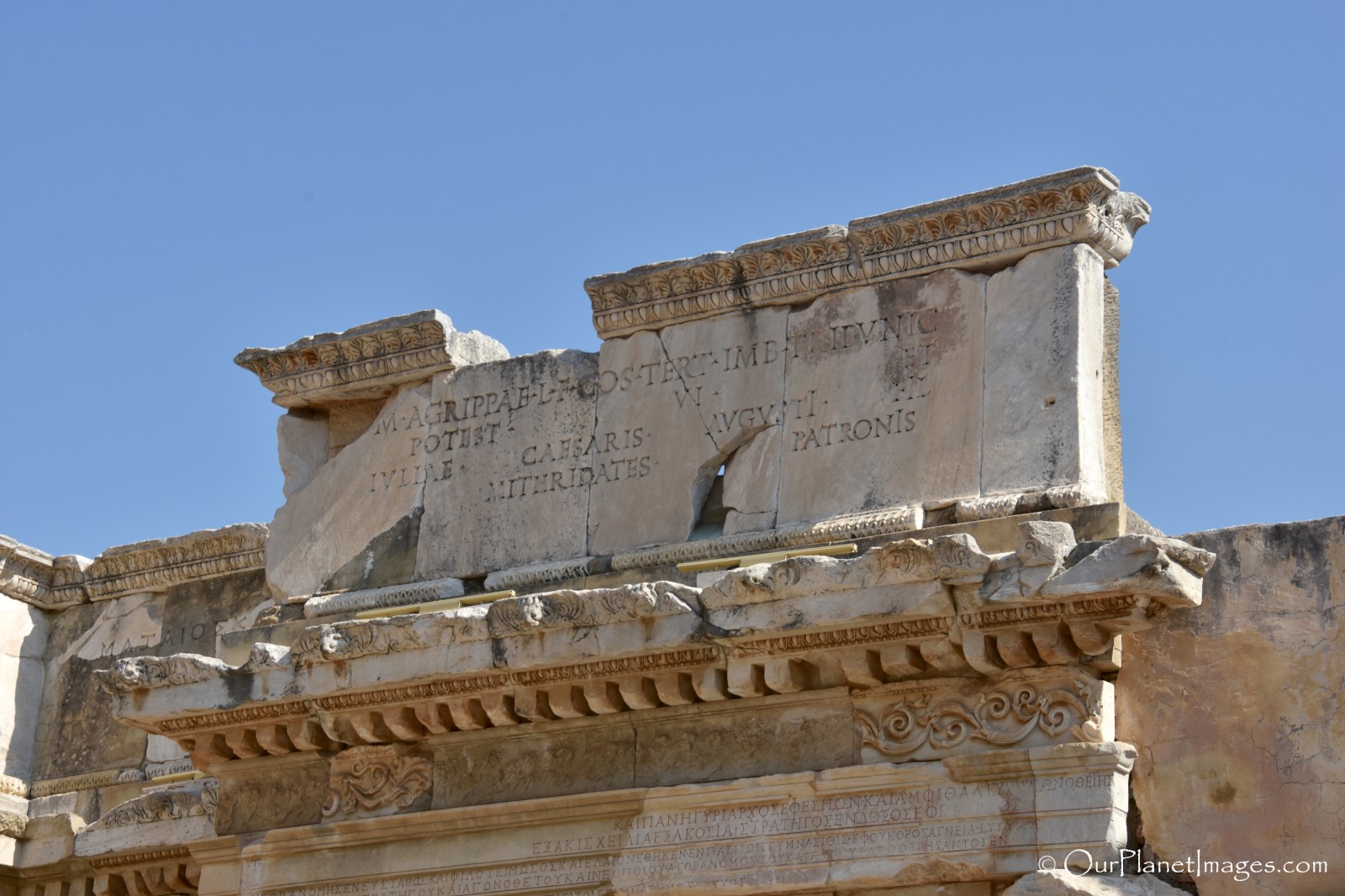
Library of Celsus
The Library of Celsus is the most impressive structures of Ephesus and towers over the other remains of the city. It was built in 125 AD in memory of Tiberius Julius Cesus Polemaeanus, an Ancient Greek who served as governor of Roman Asia from 105 to 107 AD. The library is believed to have stored 12,000 scrolls and at the time it was the third most important library after the libraries of Alexandria and Pergamum. It is the iconic image of the ancient city and it has become the symbol of the archeological site.
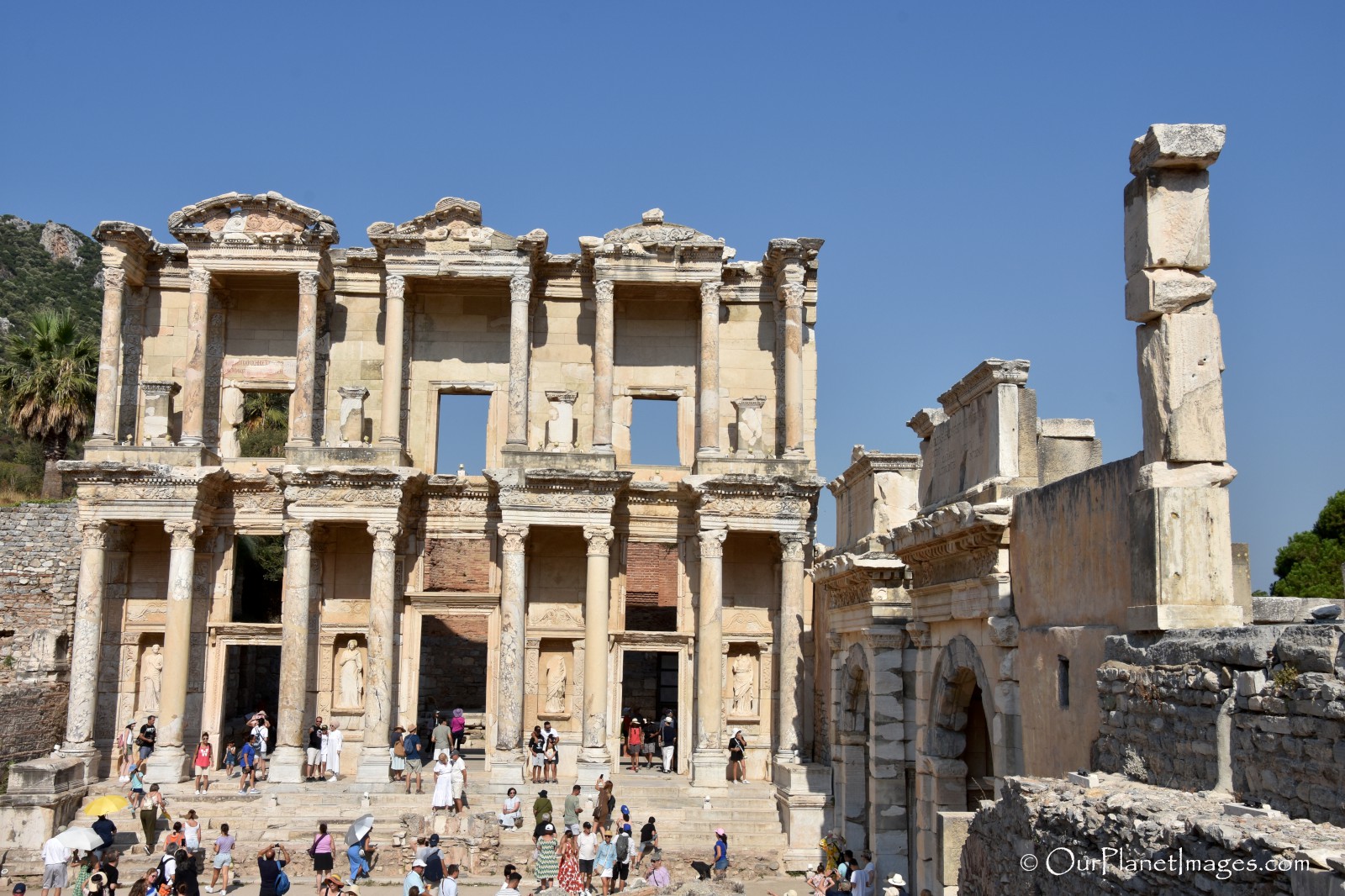
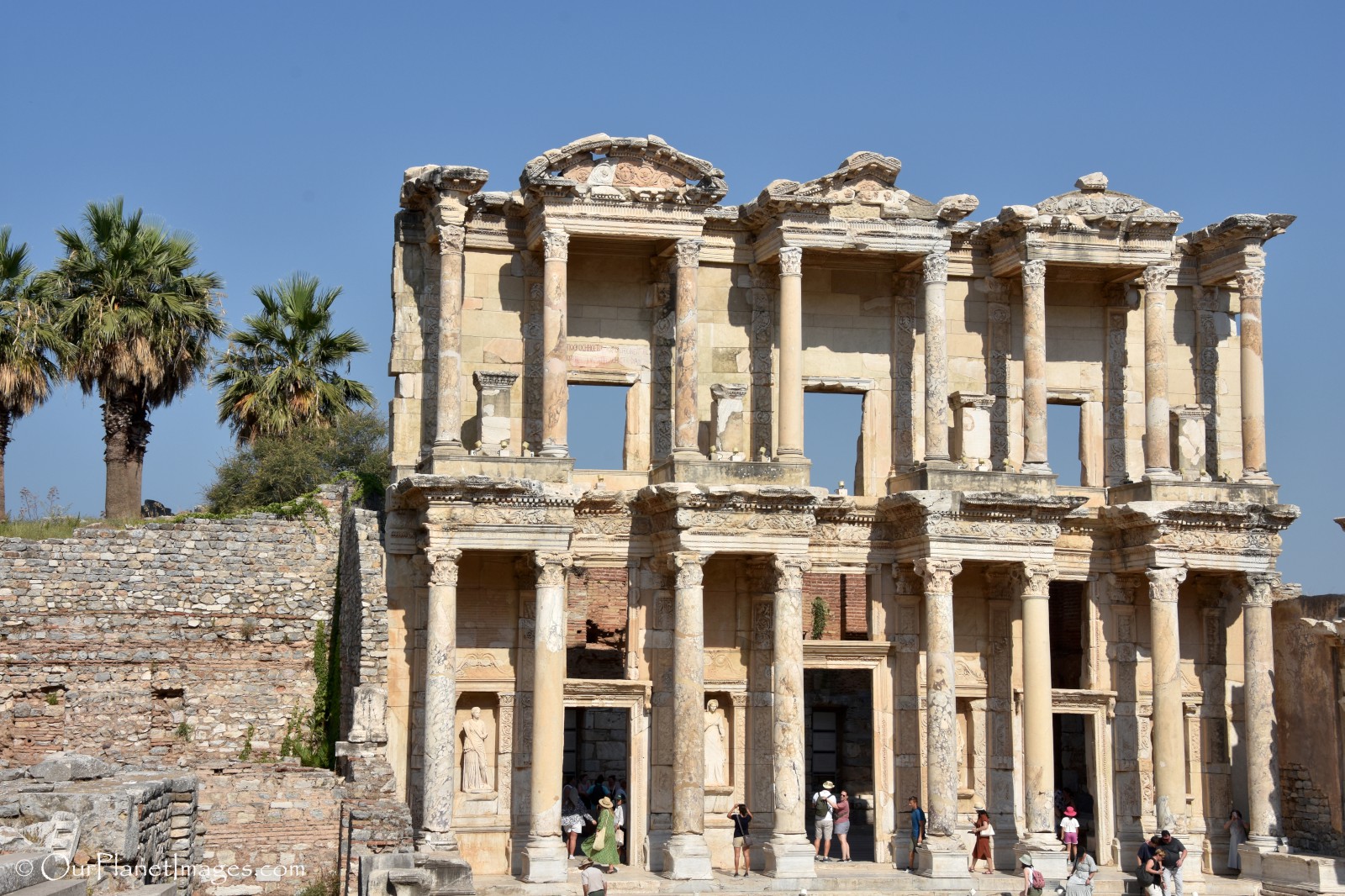
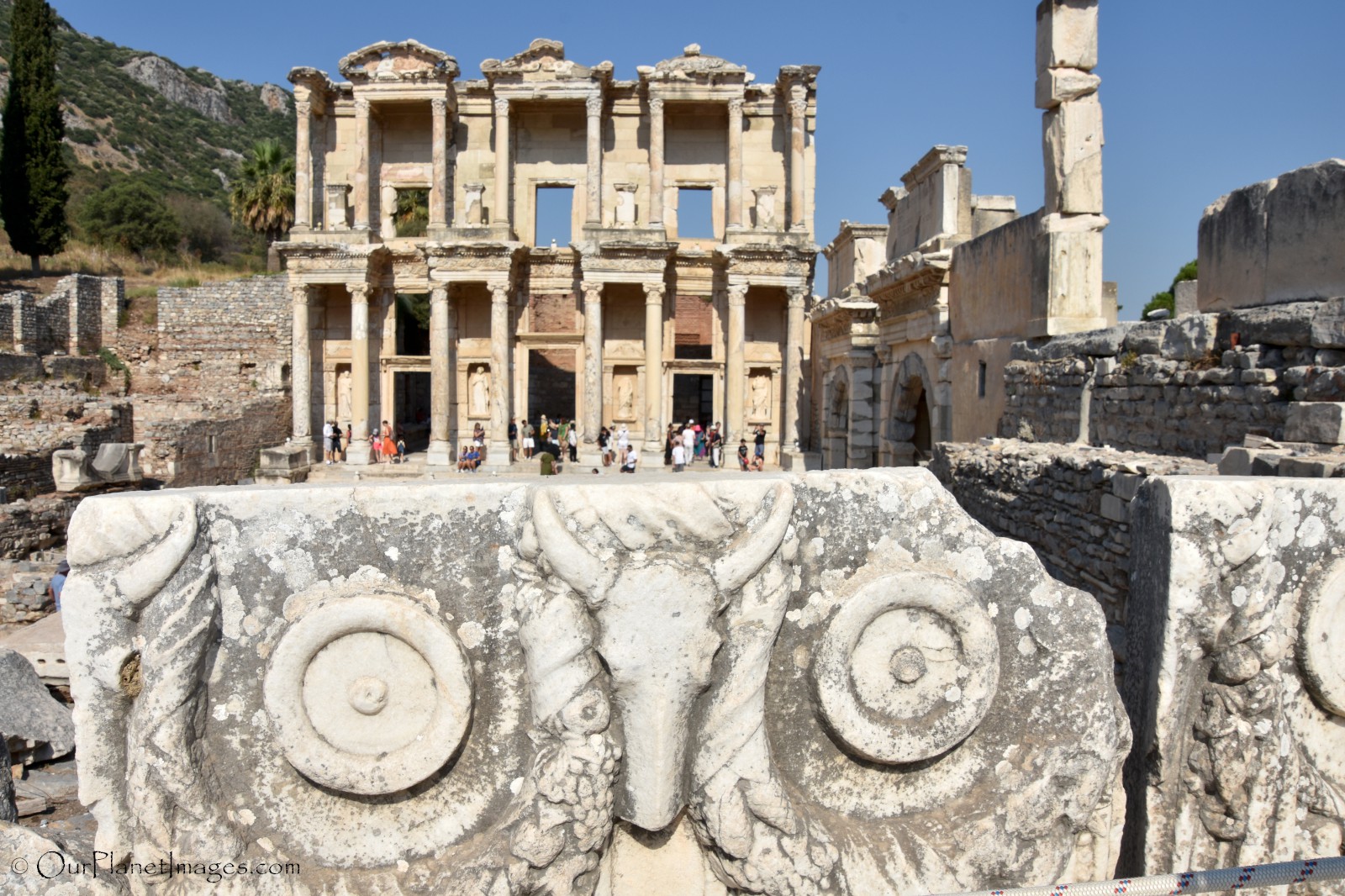
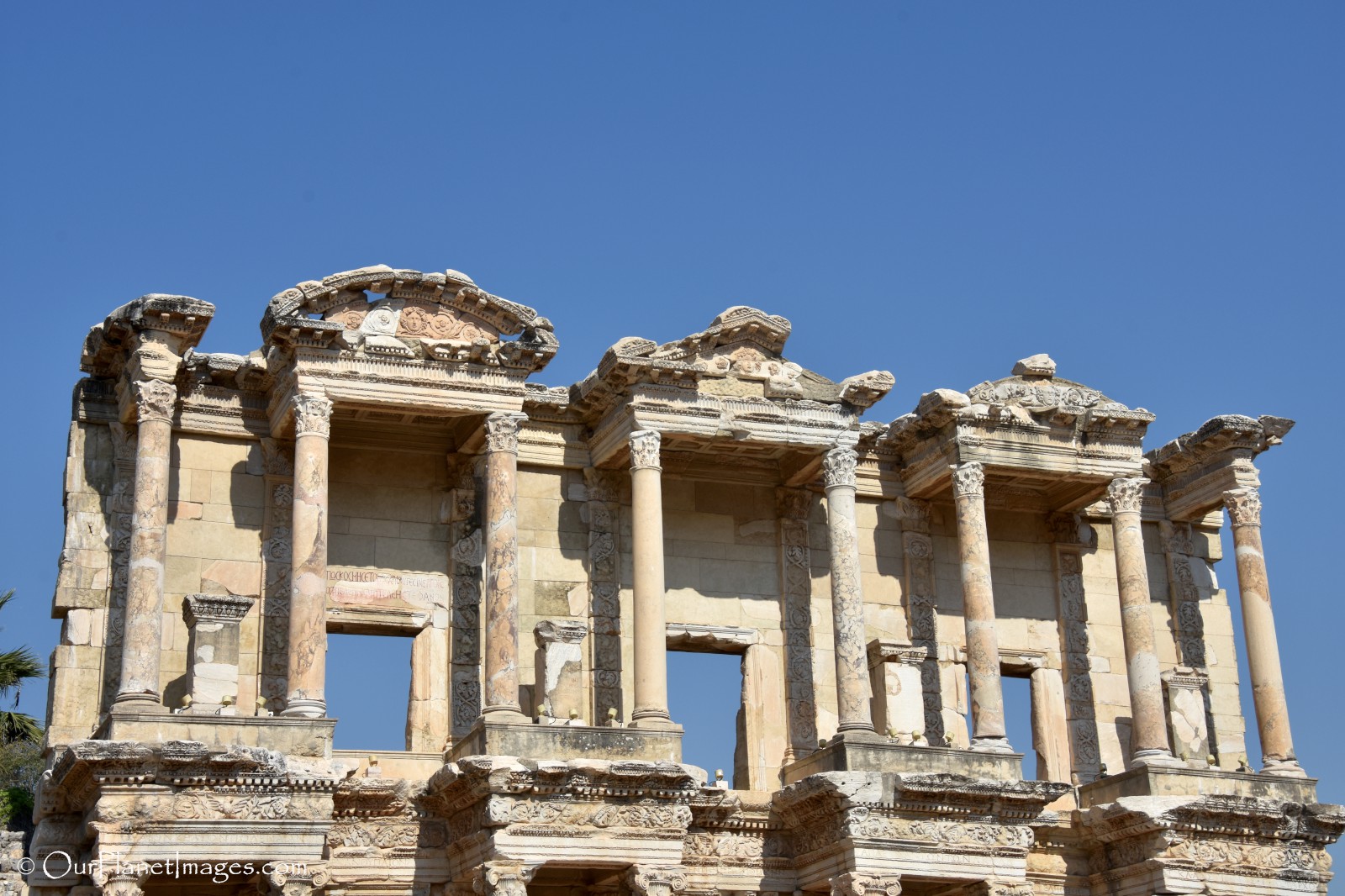
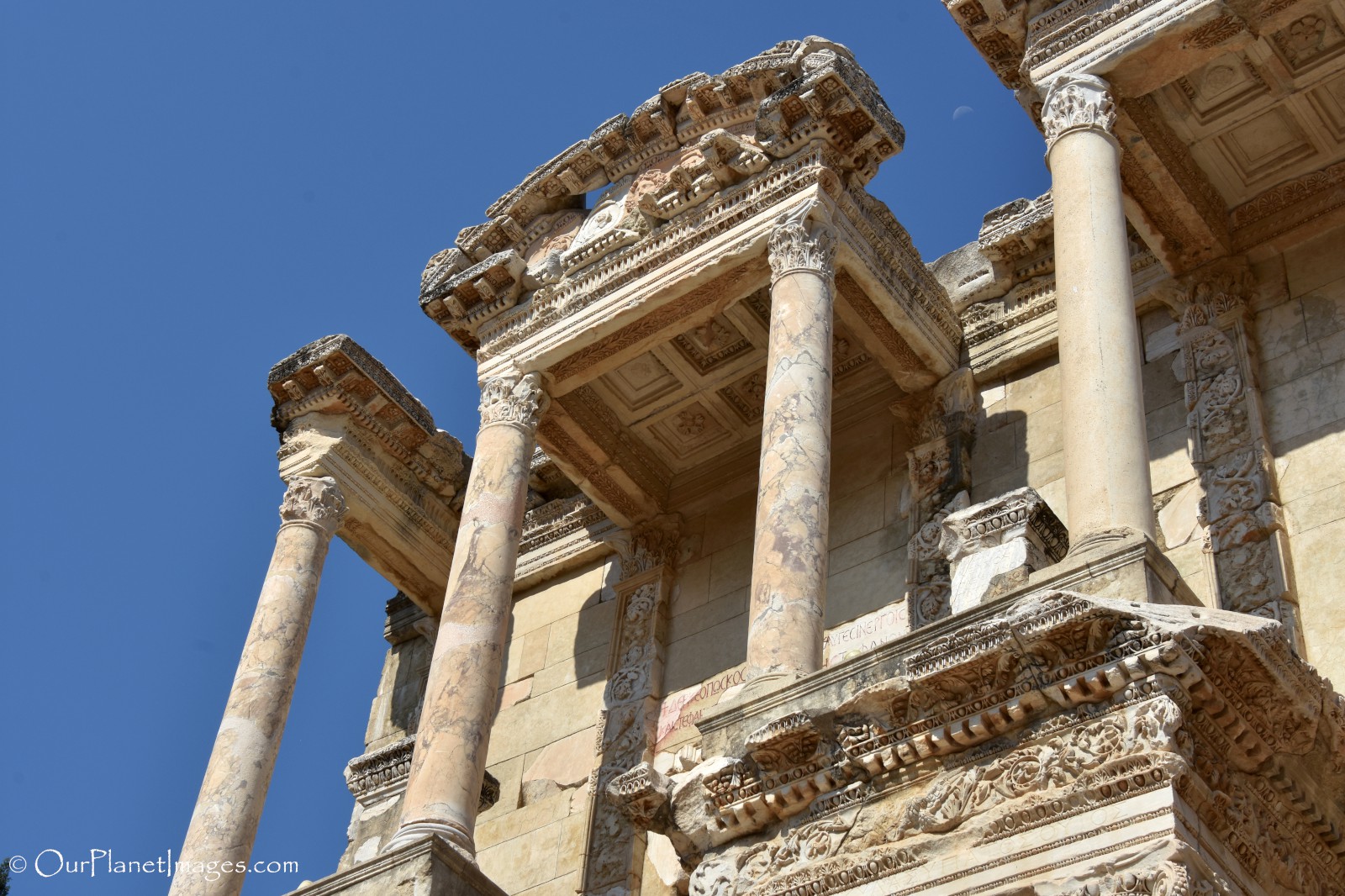
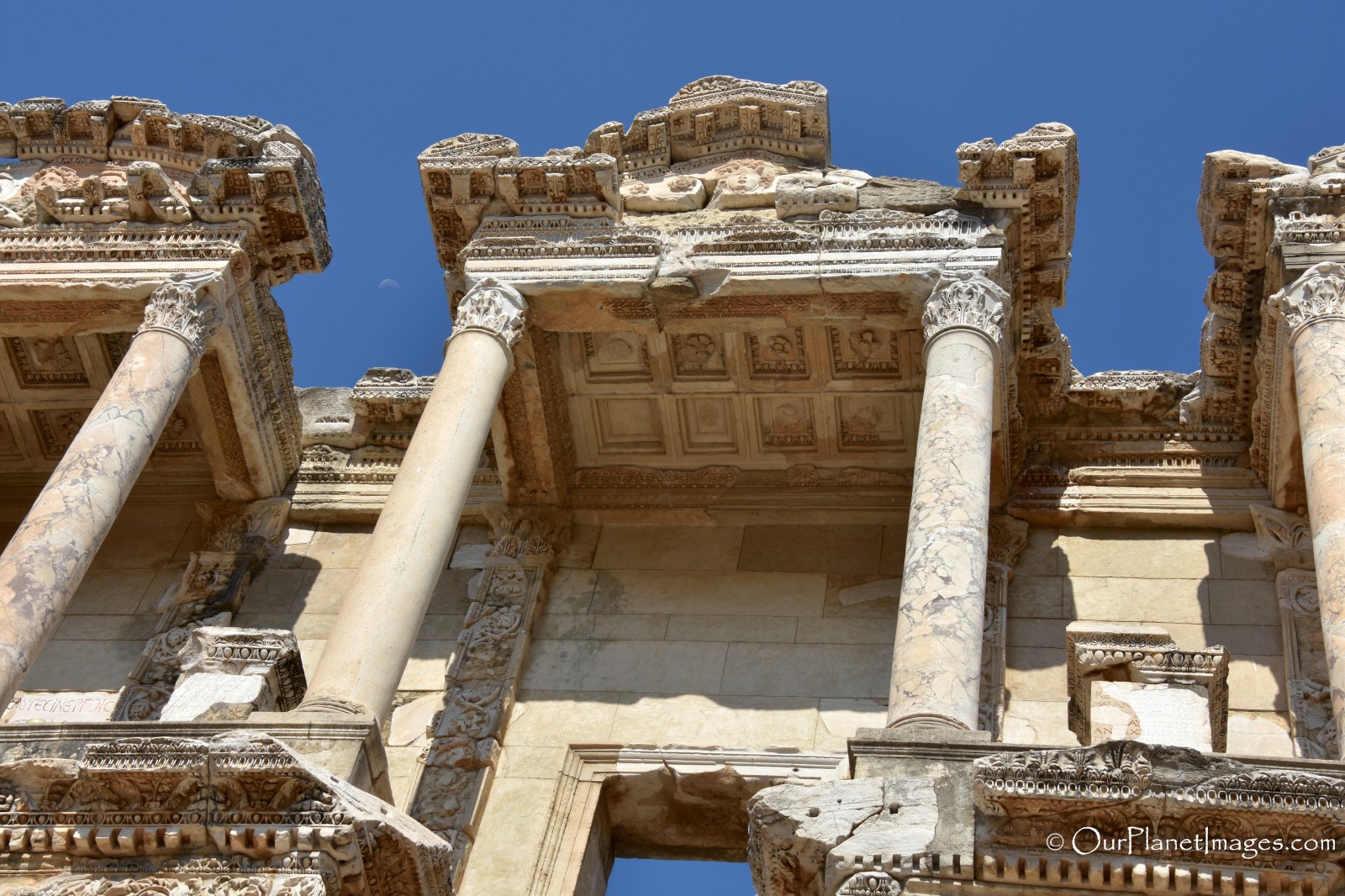
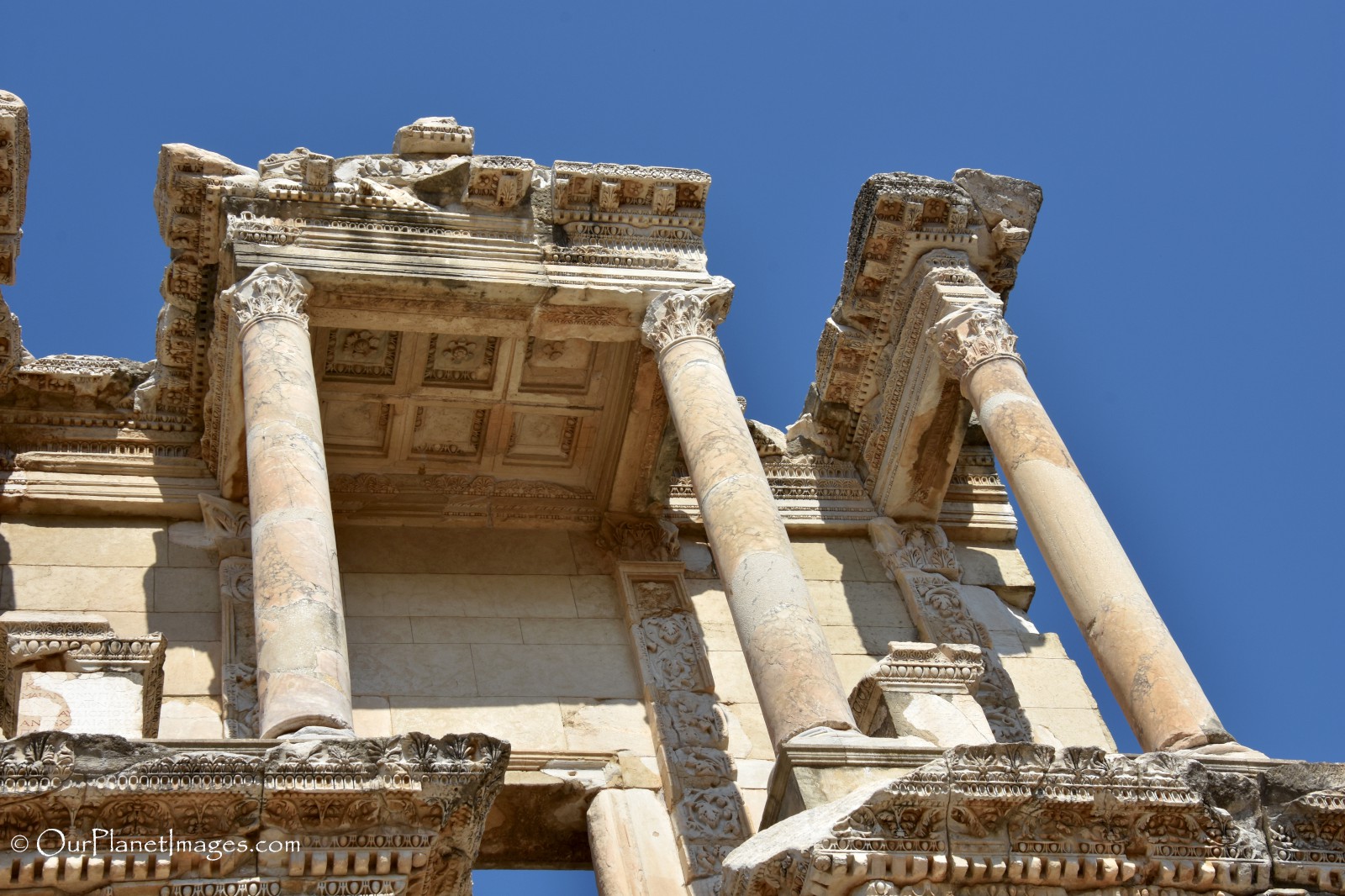
It is decorated by four statues set into the façade representing: Wisdom, Knowledge, Intelligence and Valor. Two of these statues are shown below.
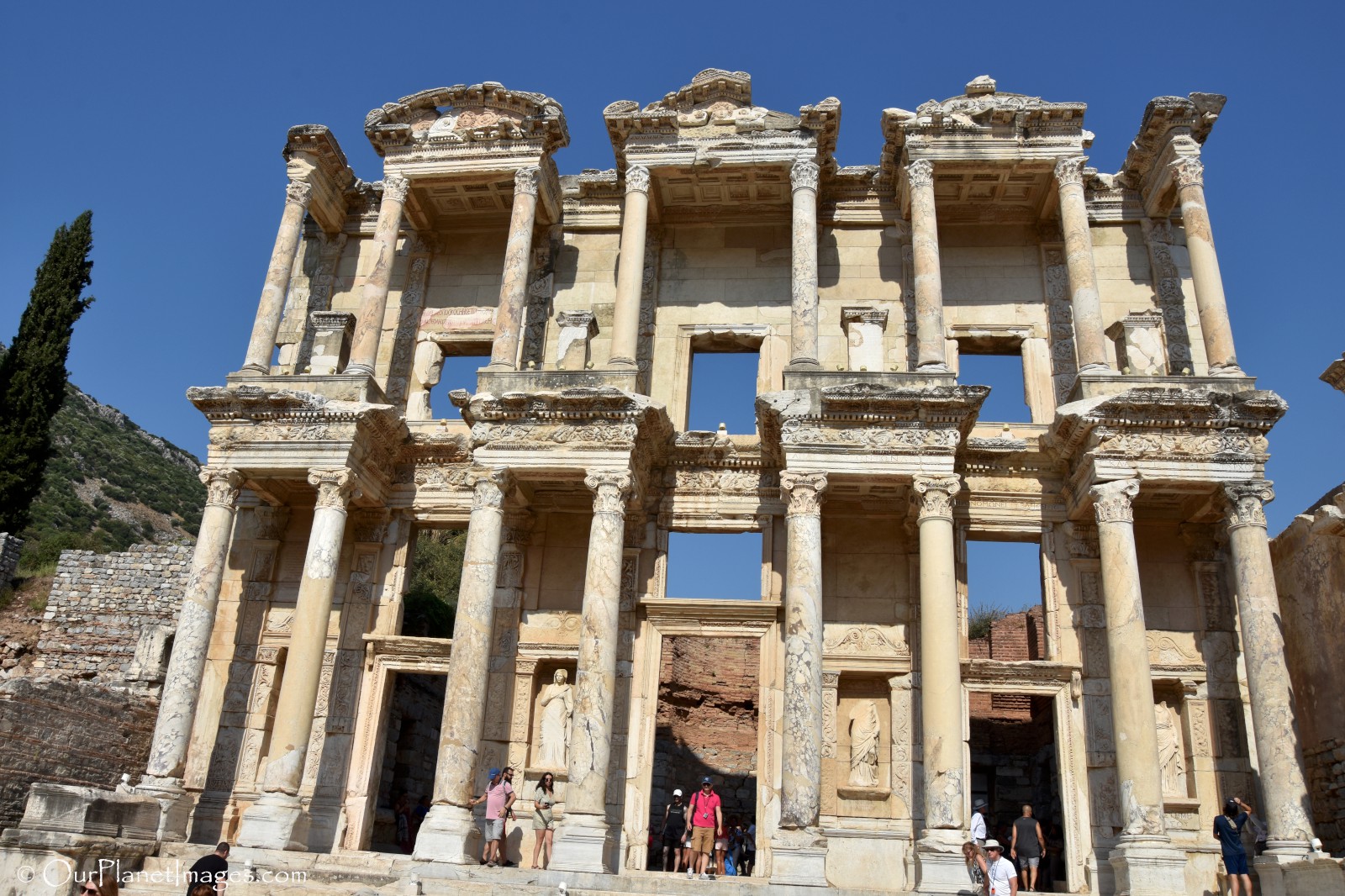
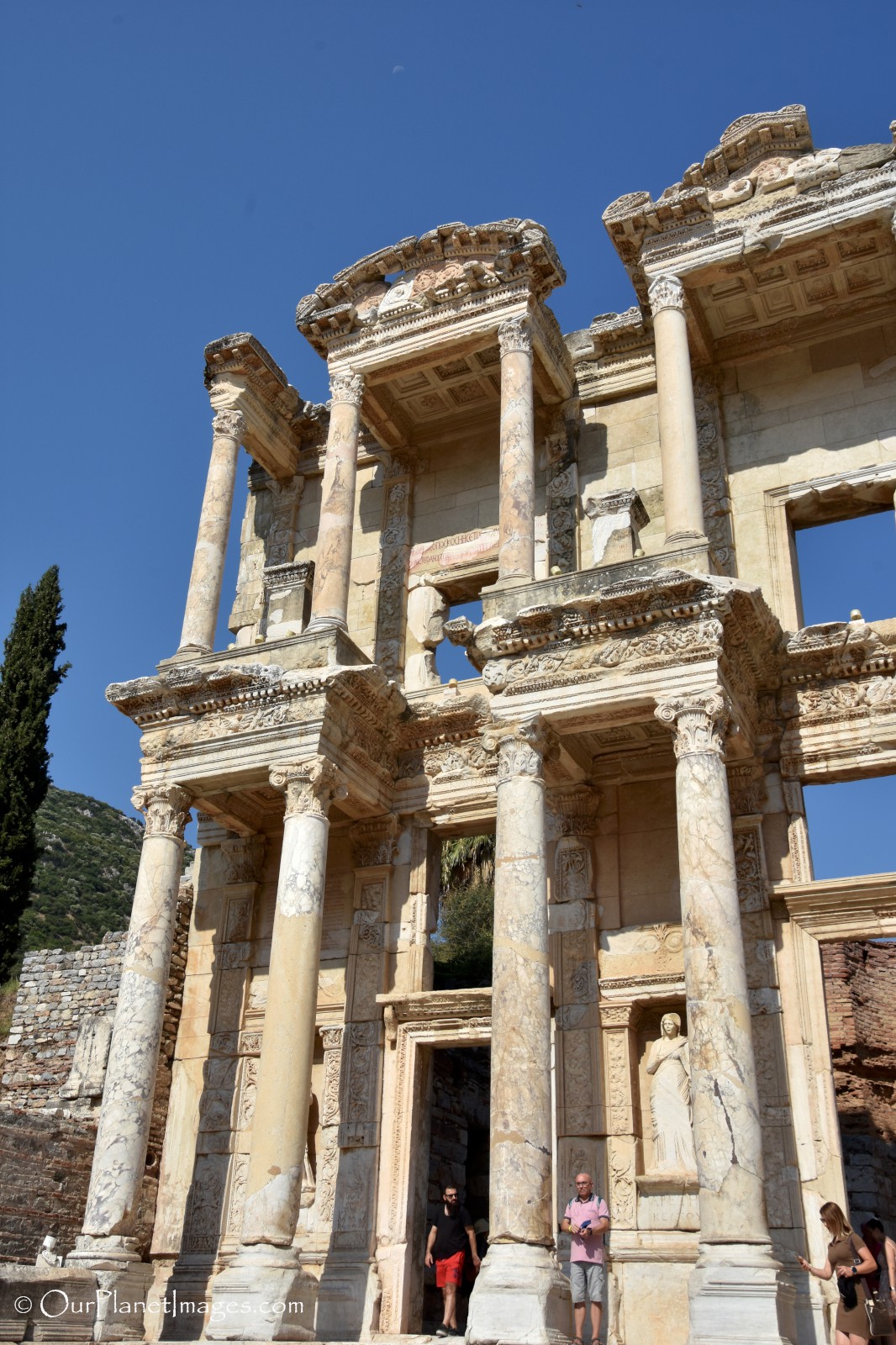
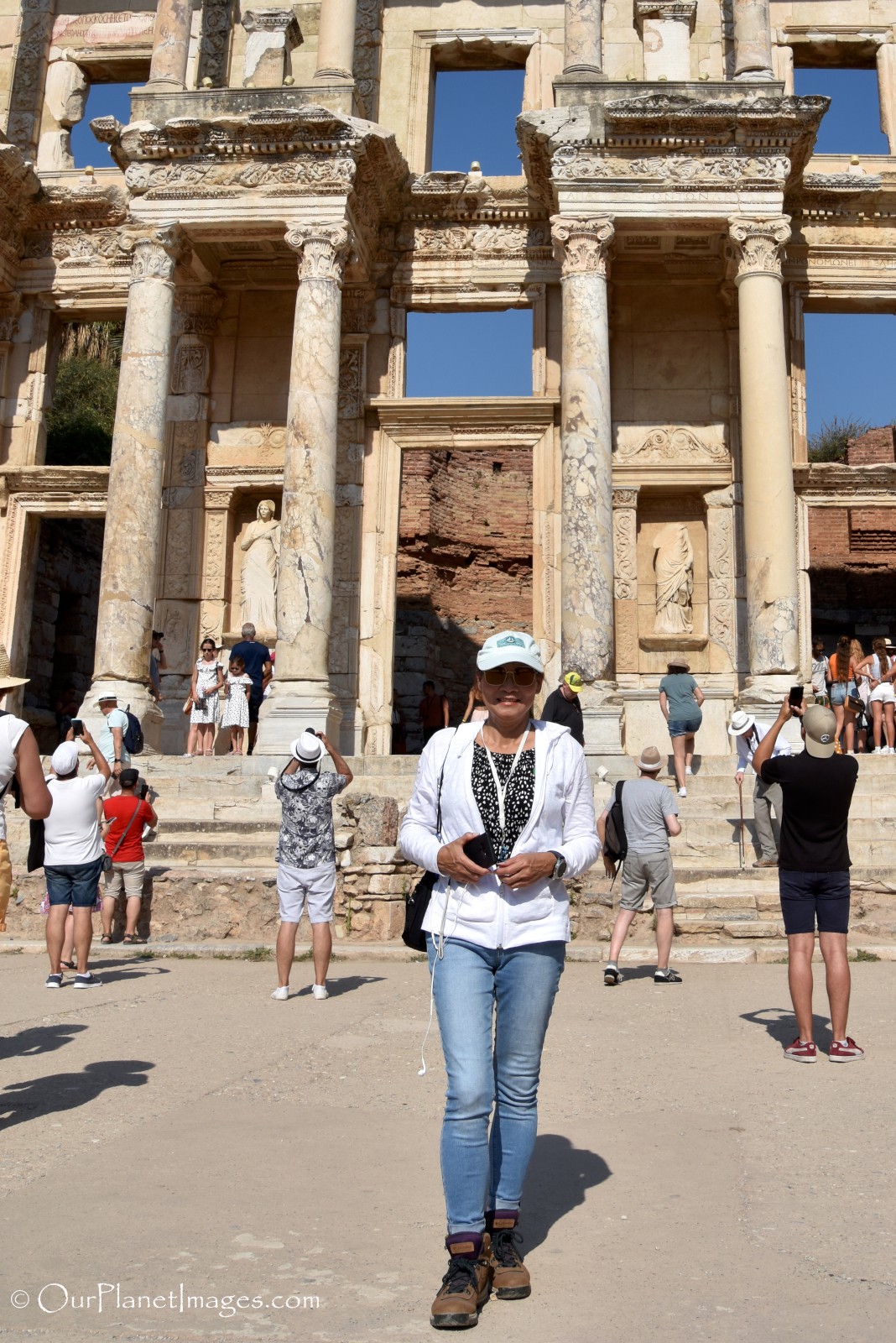
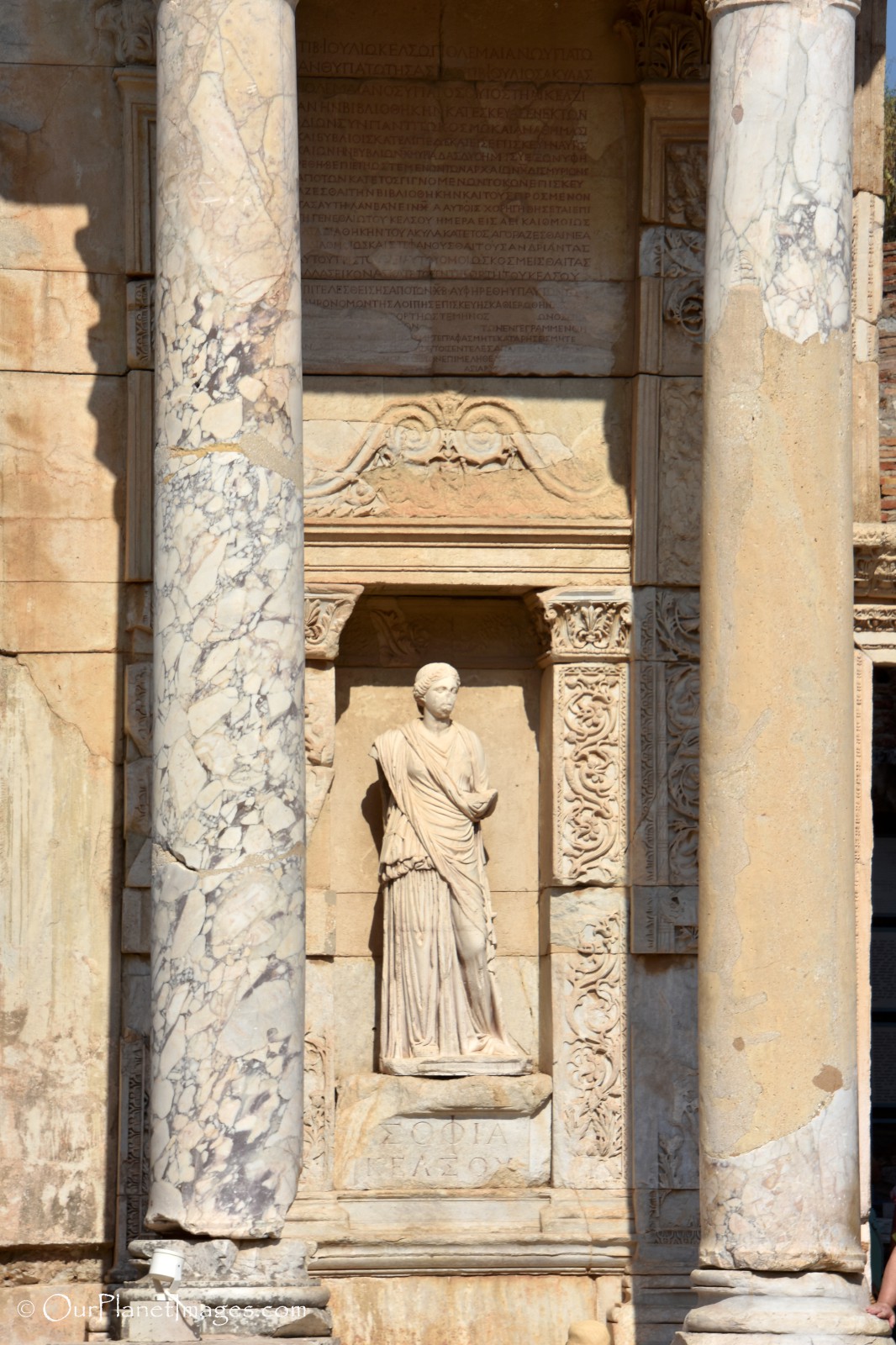
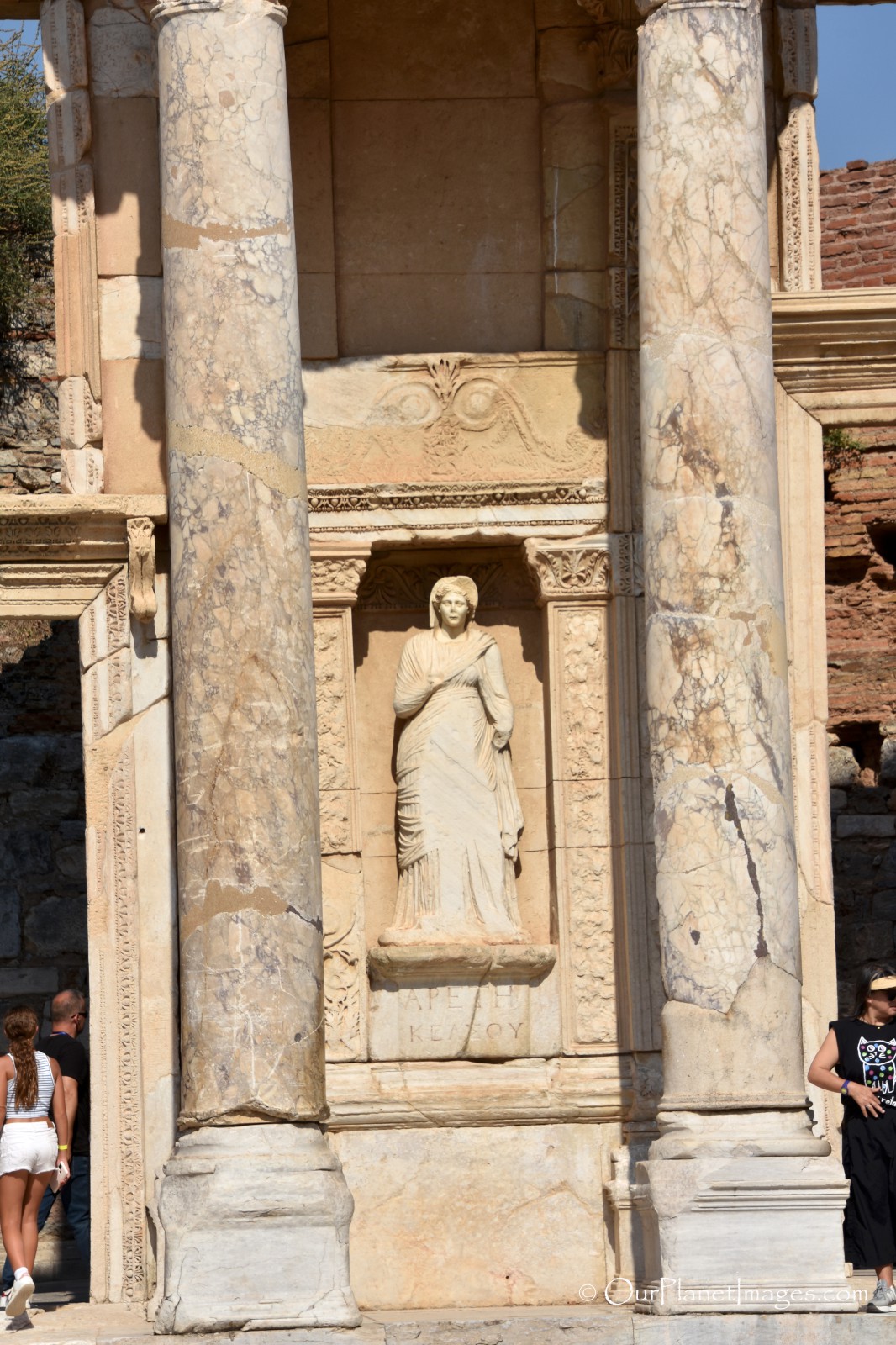
Curetes Street
Curetes Street runs from the Library of Celsus to the Hercules Gate and was one of three streets in the city. Shops, temples and monuments that were part of Ephesians daily lives were located along this street.
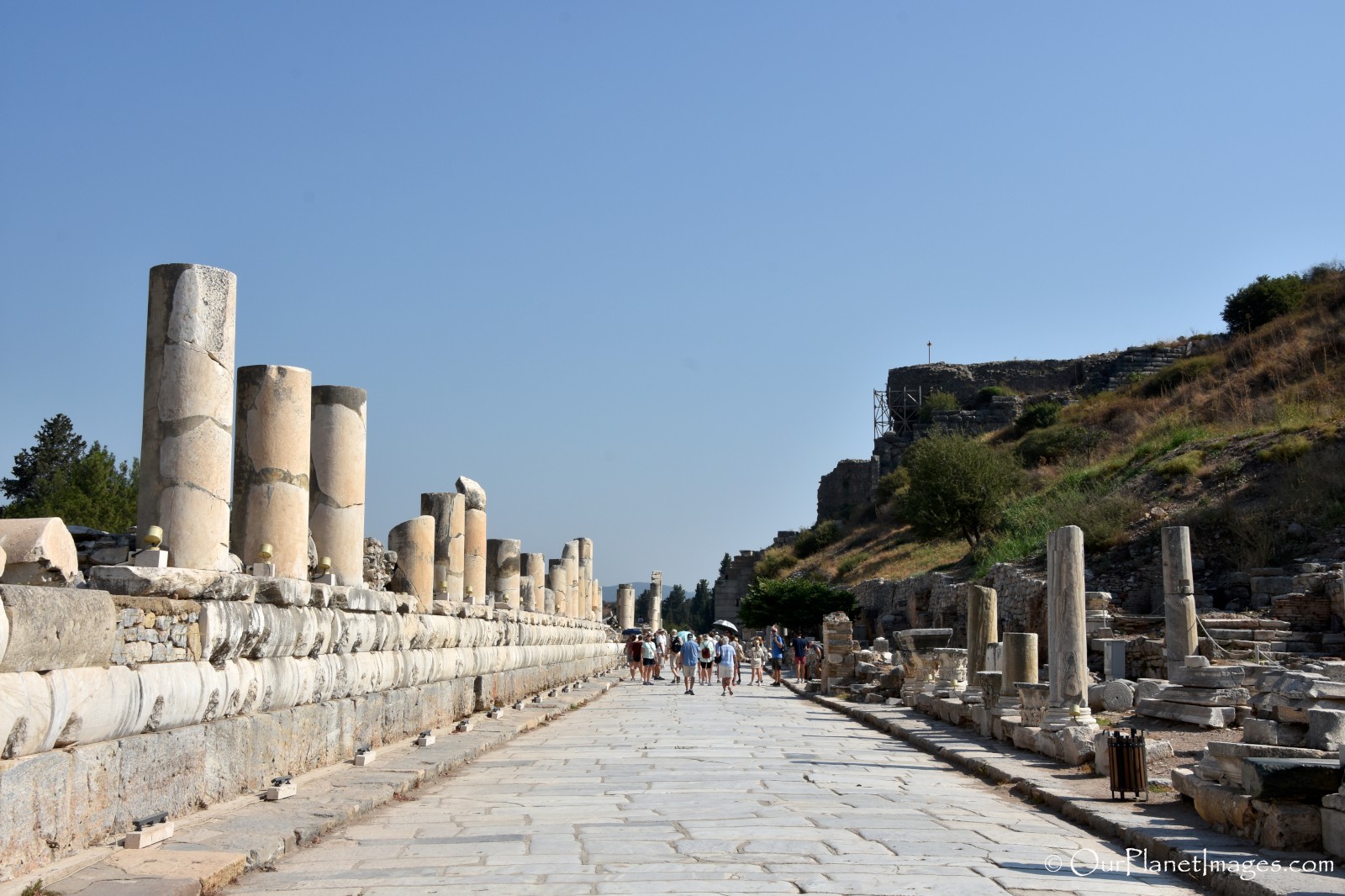
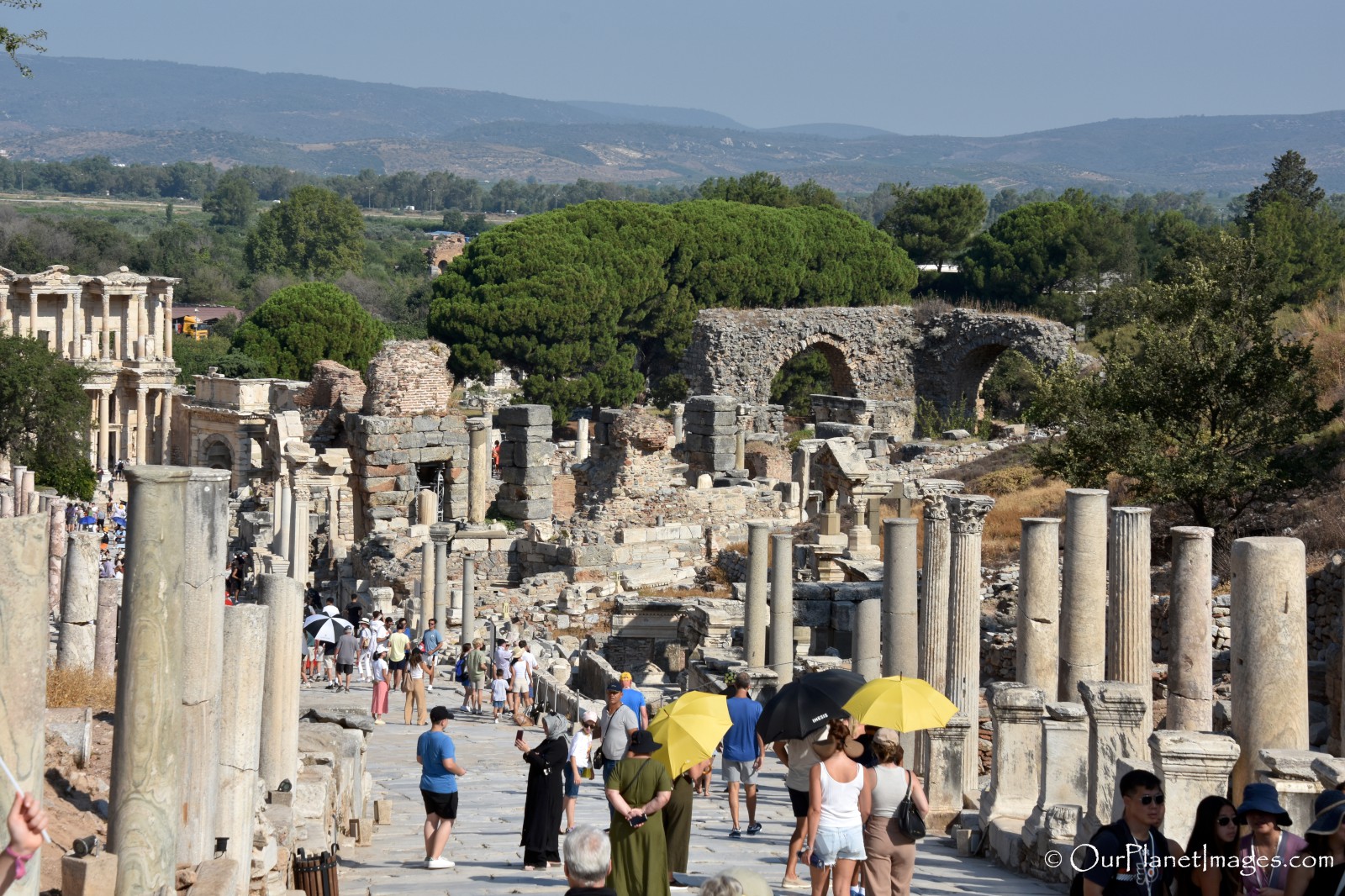
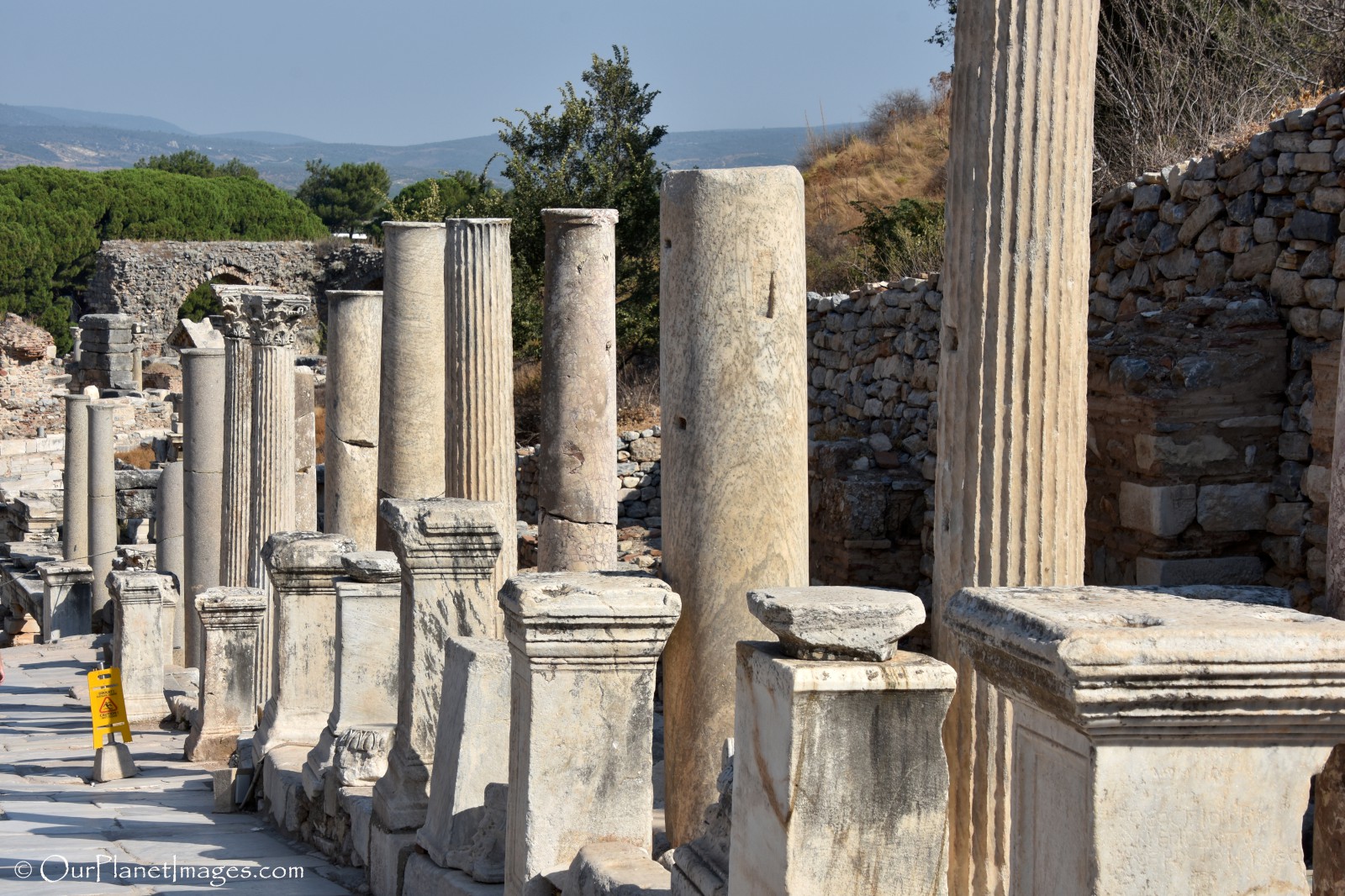
Temple of Hadrian
Another of the best preserved structures is the Temple of Hadrian. It was dedicated to Emperor Hadrian when he came to the city in 128 AD. The façade is built with two square columns on the outside and two round columns on the inside.
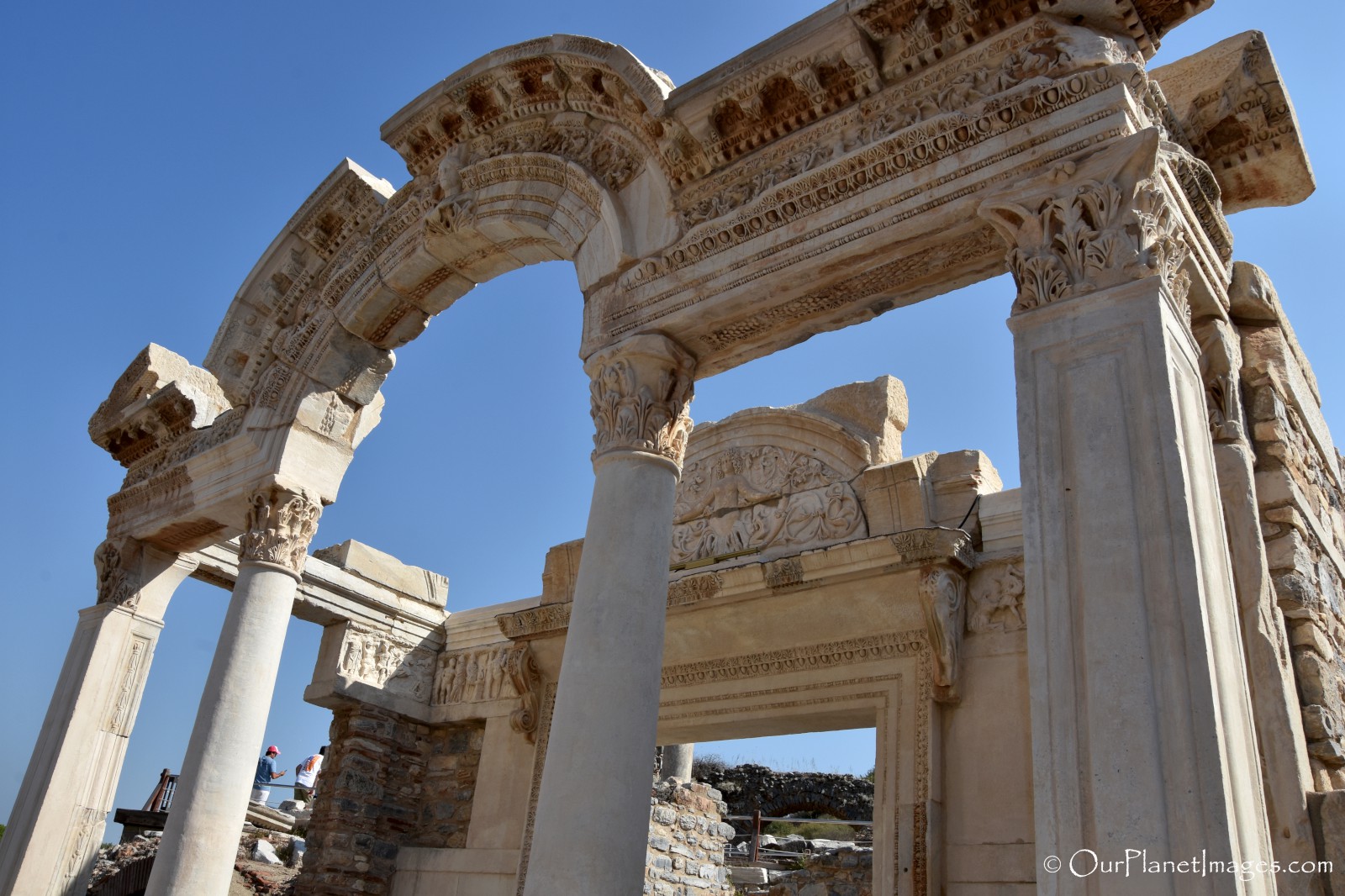
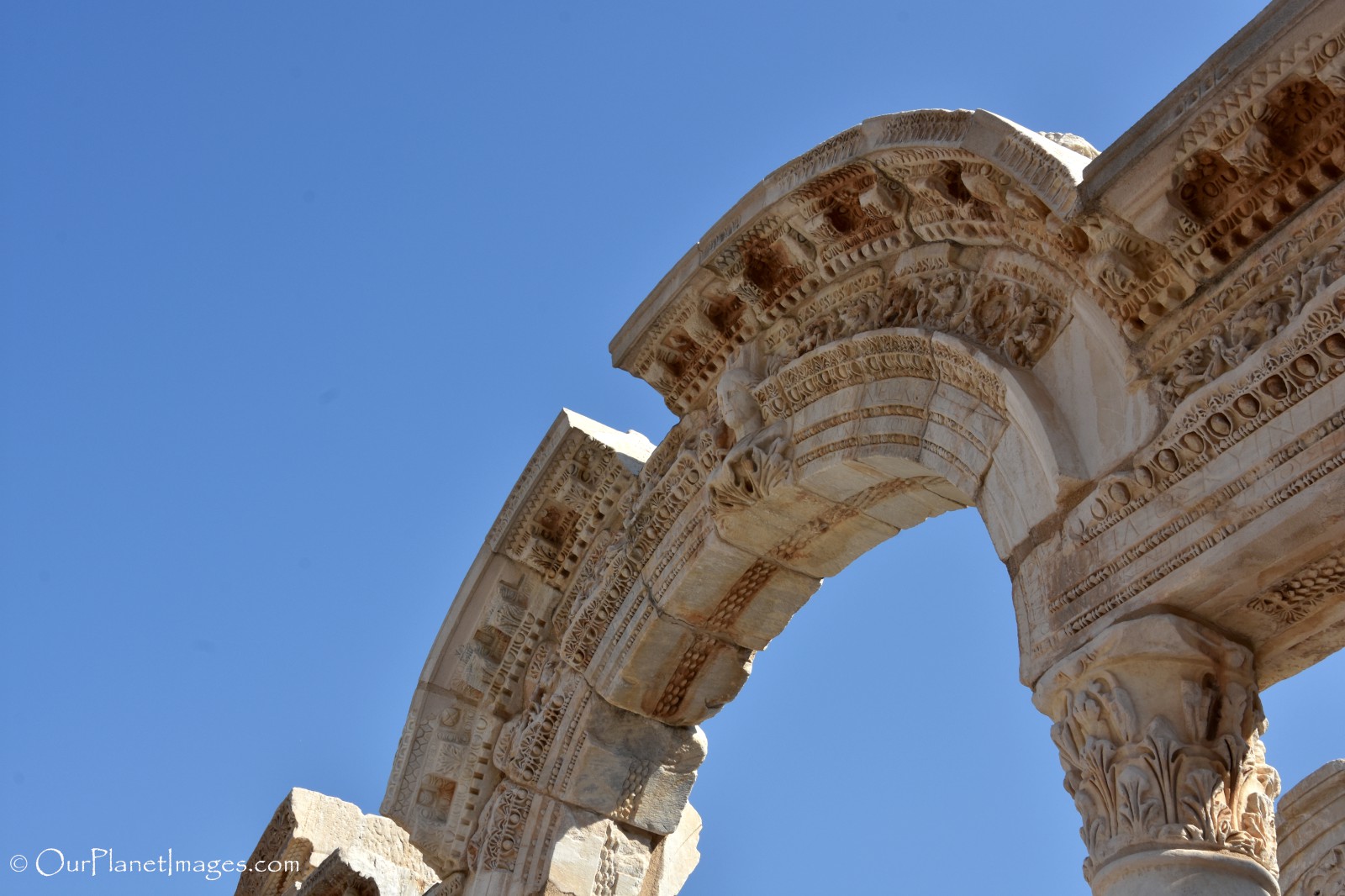
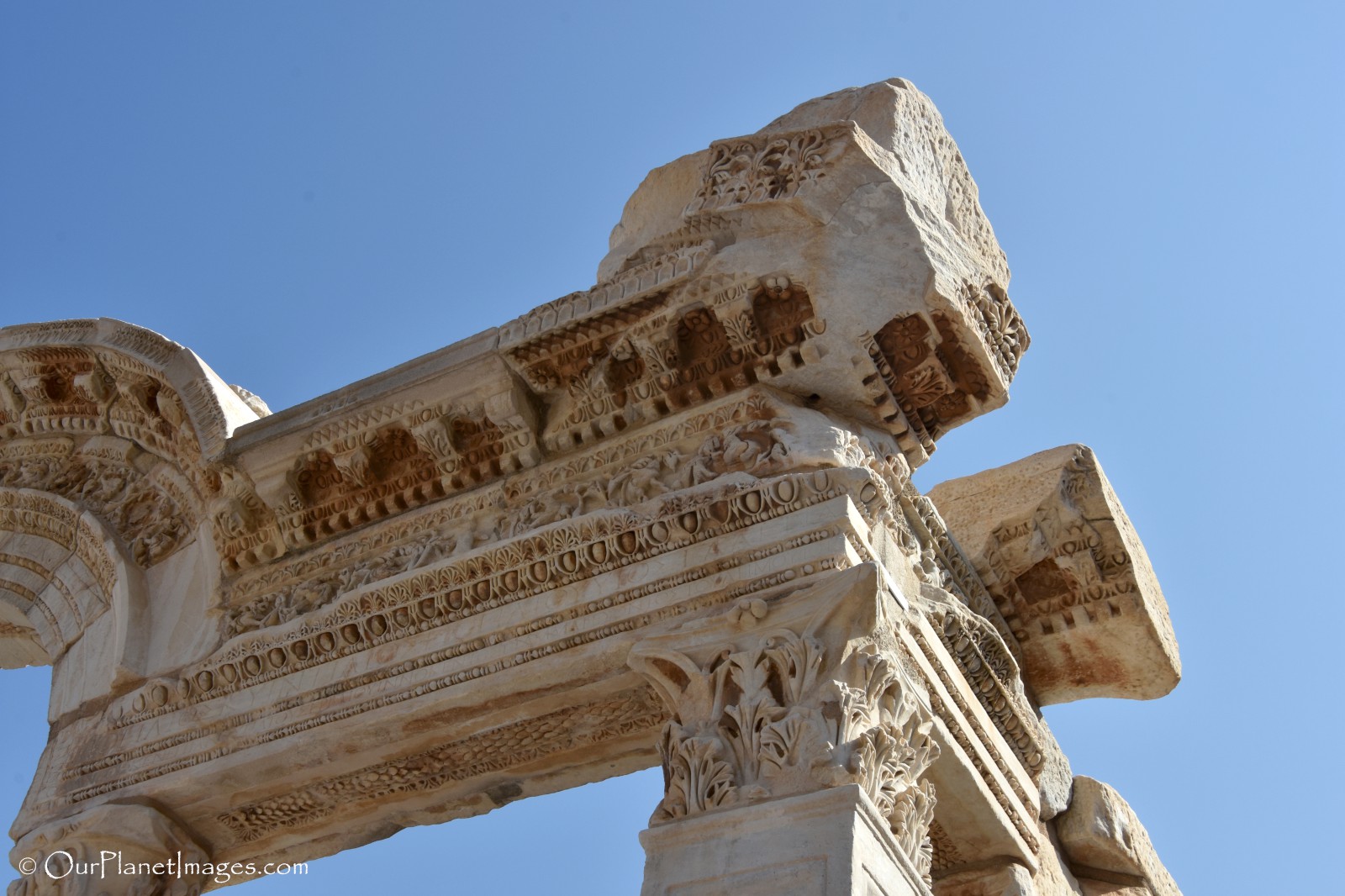
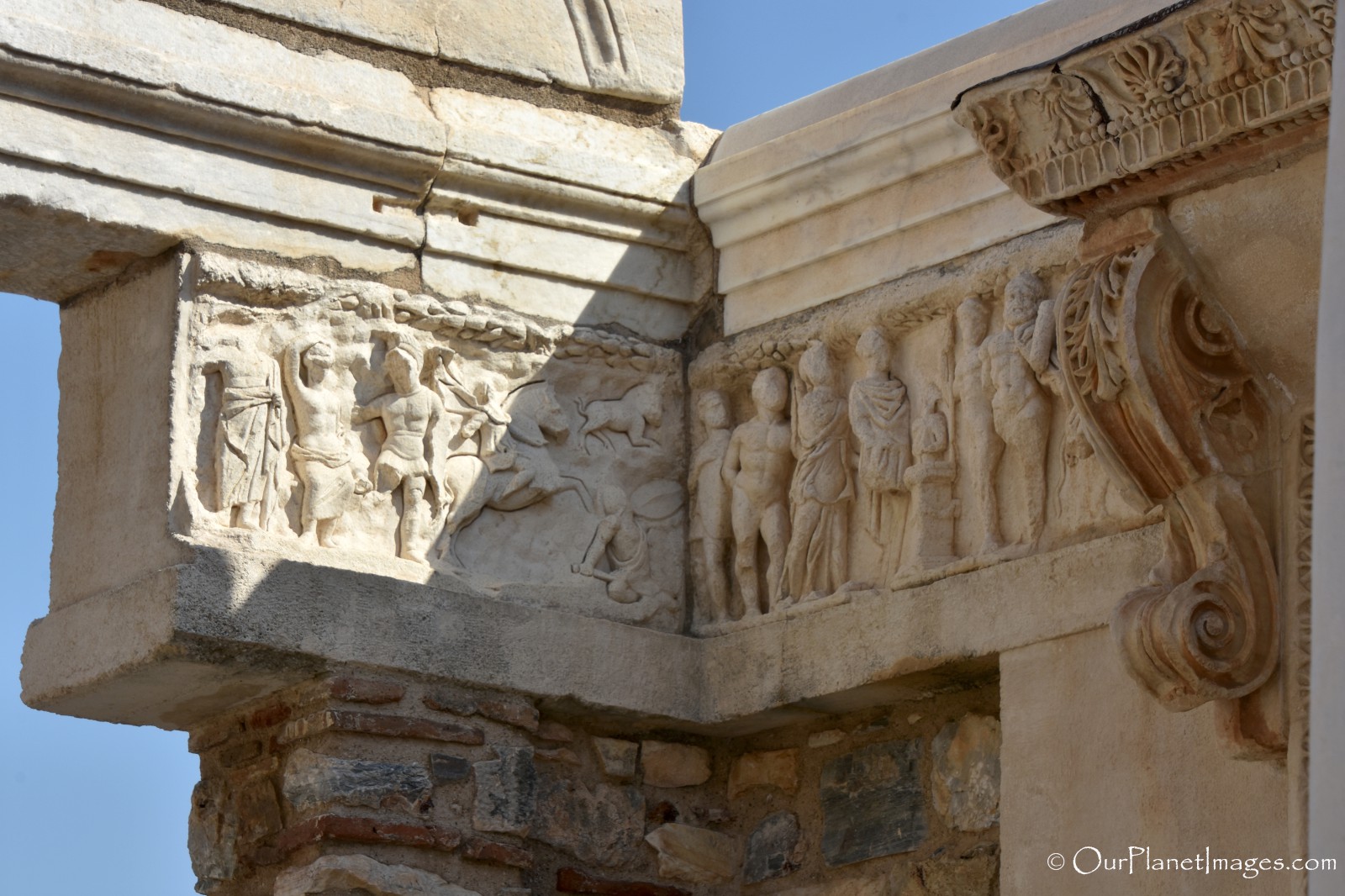
The arch above the door portrays Medusa.
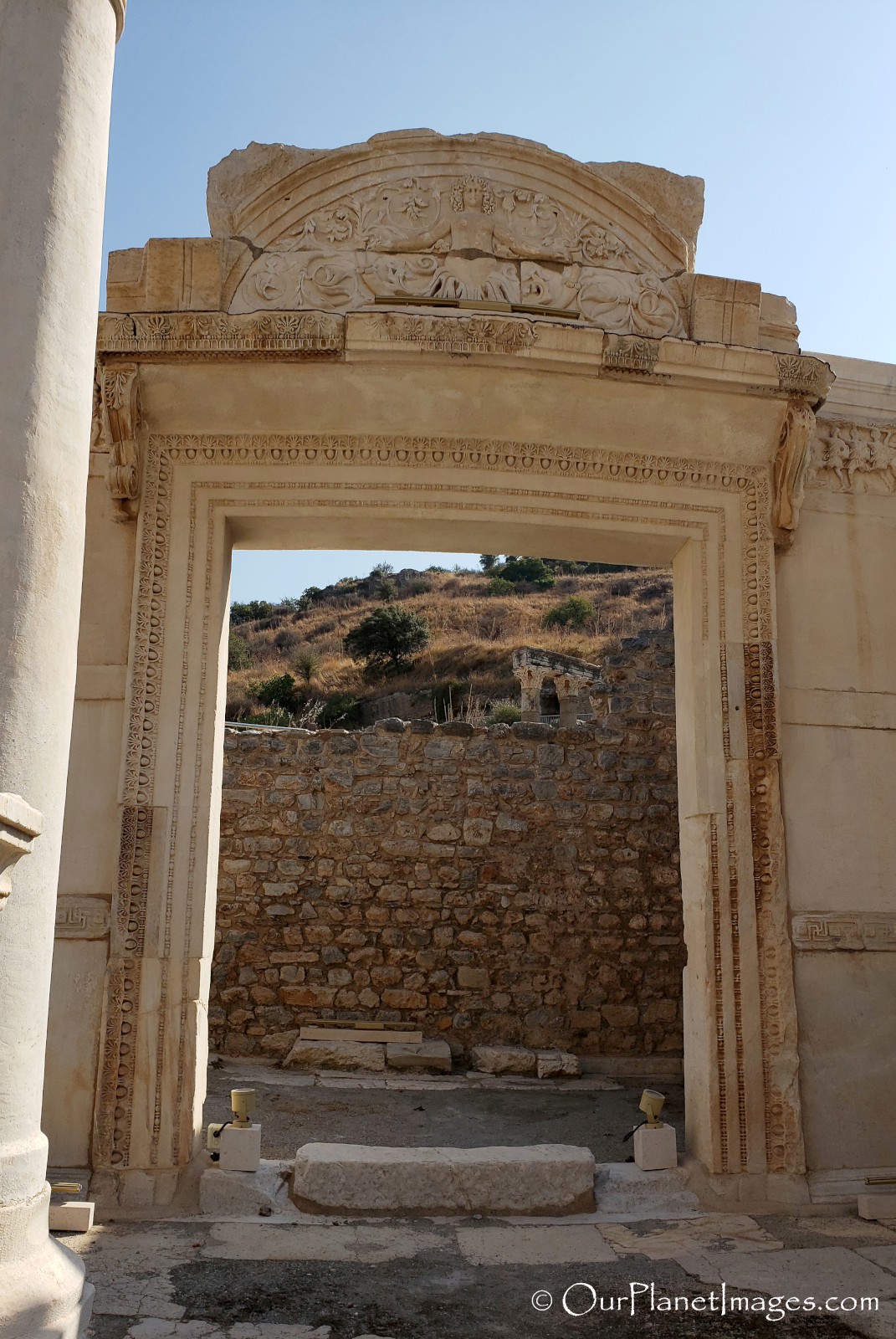
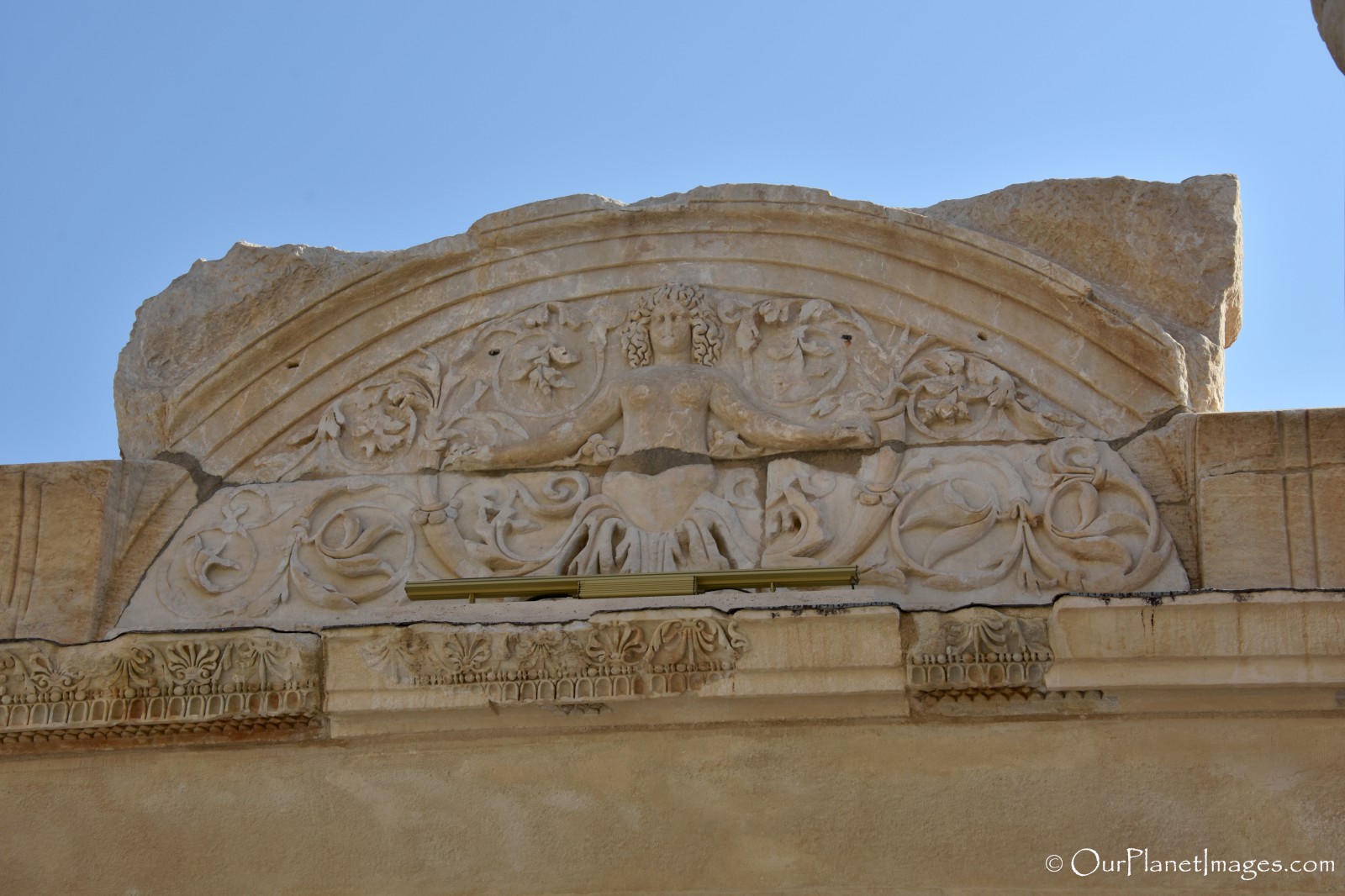
Trajan’s Fountain
The Trajan’s Fountain was built around 140 AD and was dedicated to Roman Emperor Trajan.
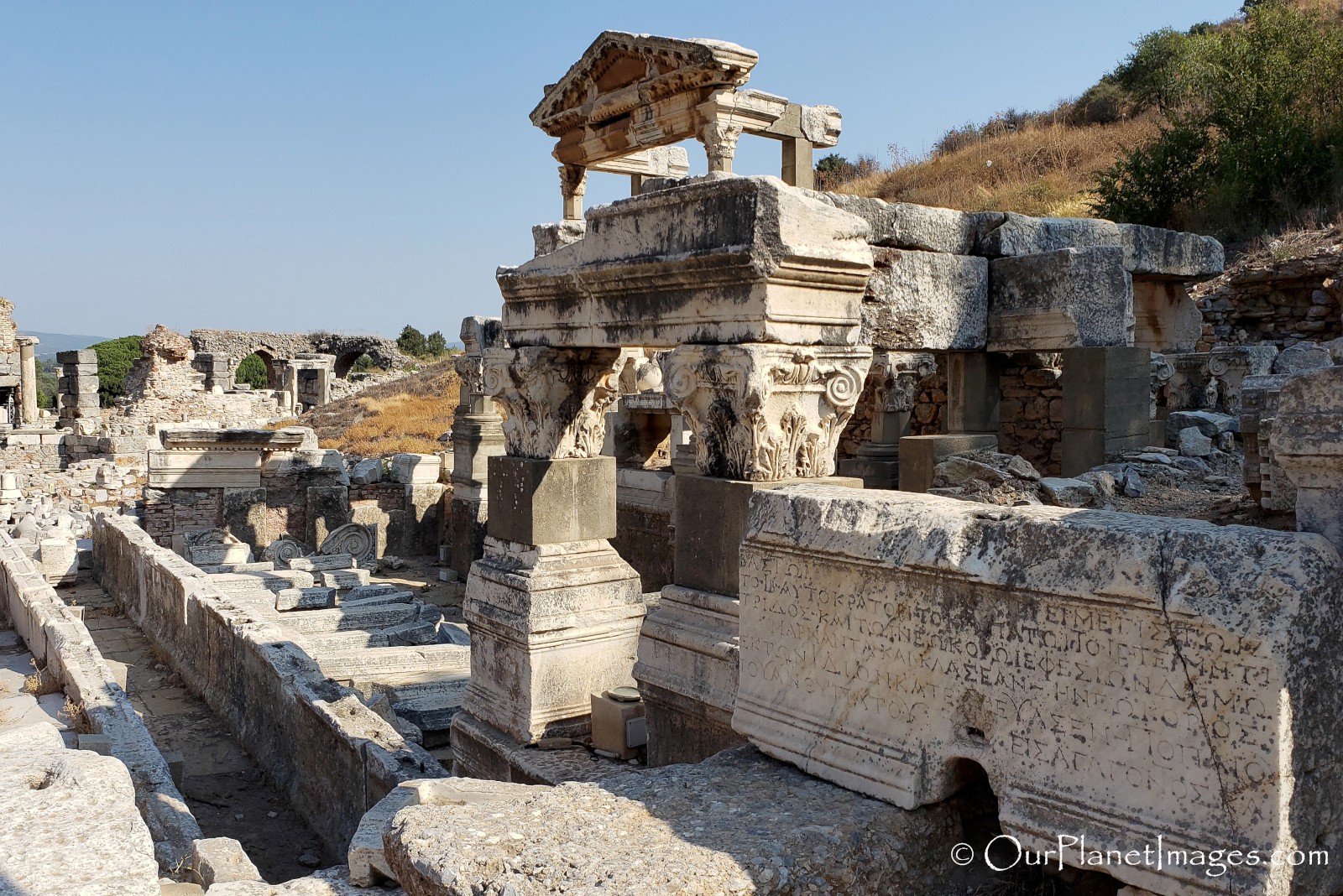
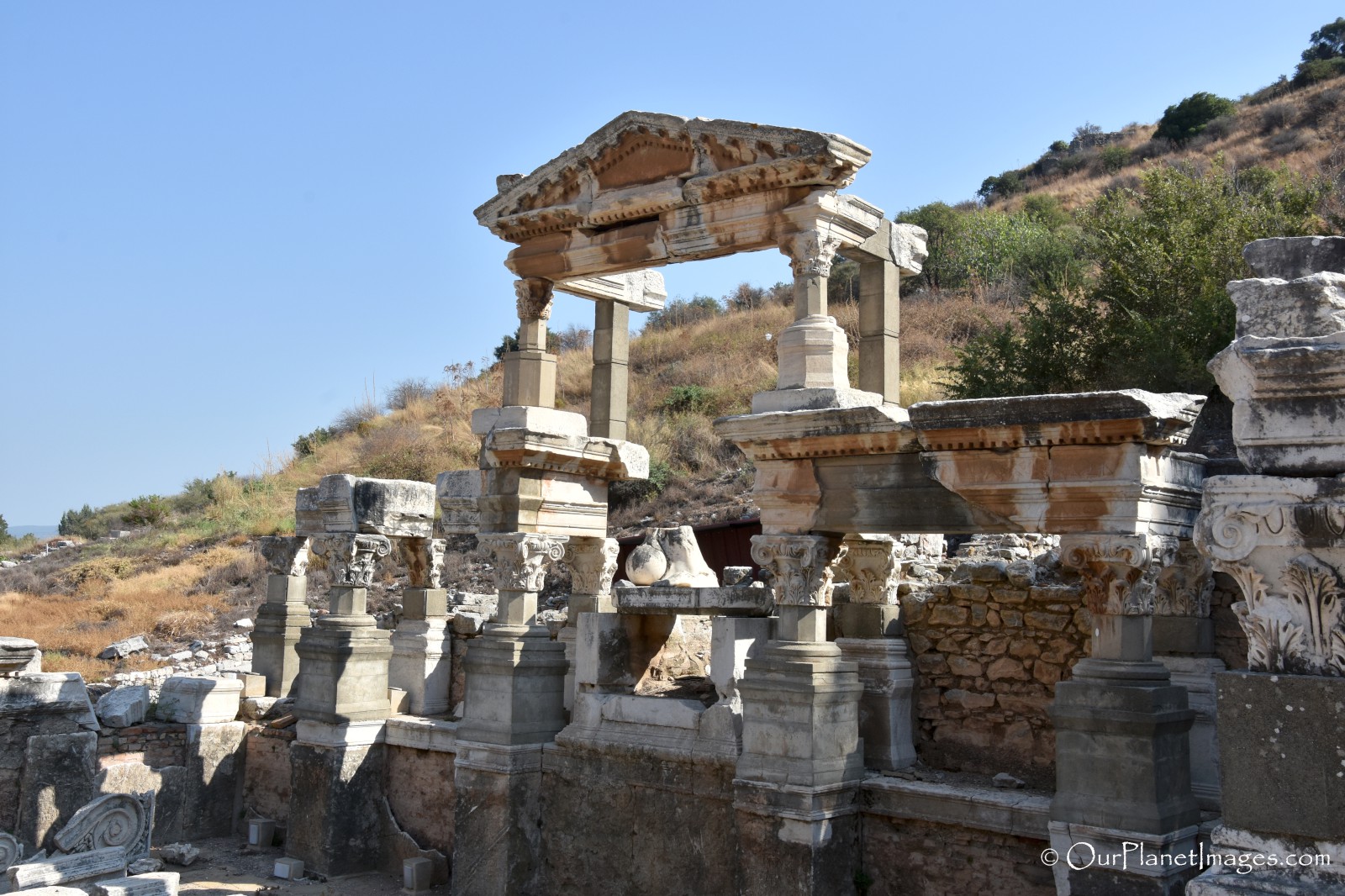
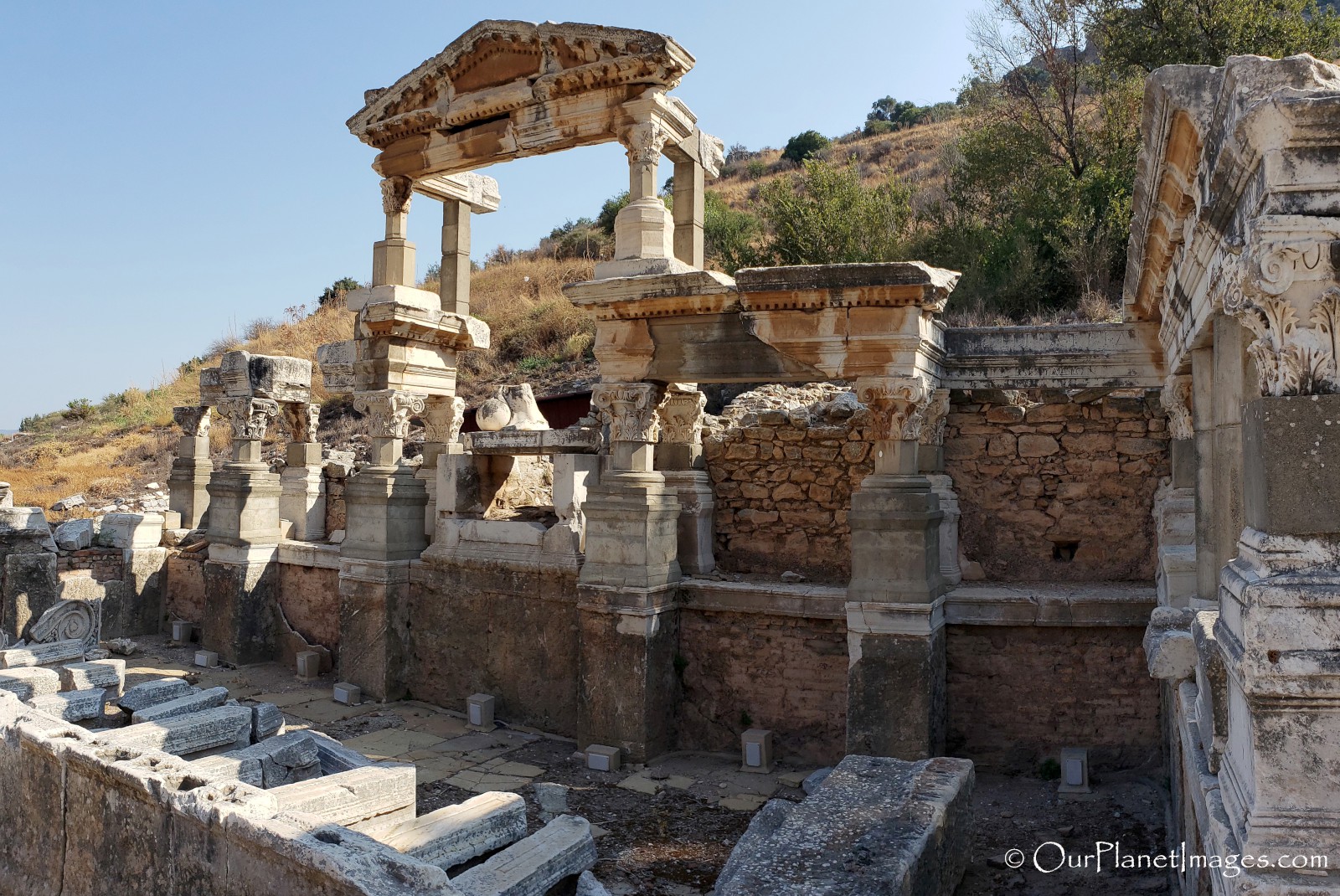
Hercules Gate
The gate is called the Hercules Gate because the relief on the left column is of Hercules. It is determined to be Hercules because he is shown holding a lion’s head.
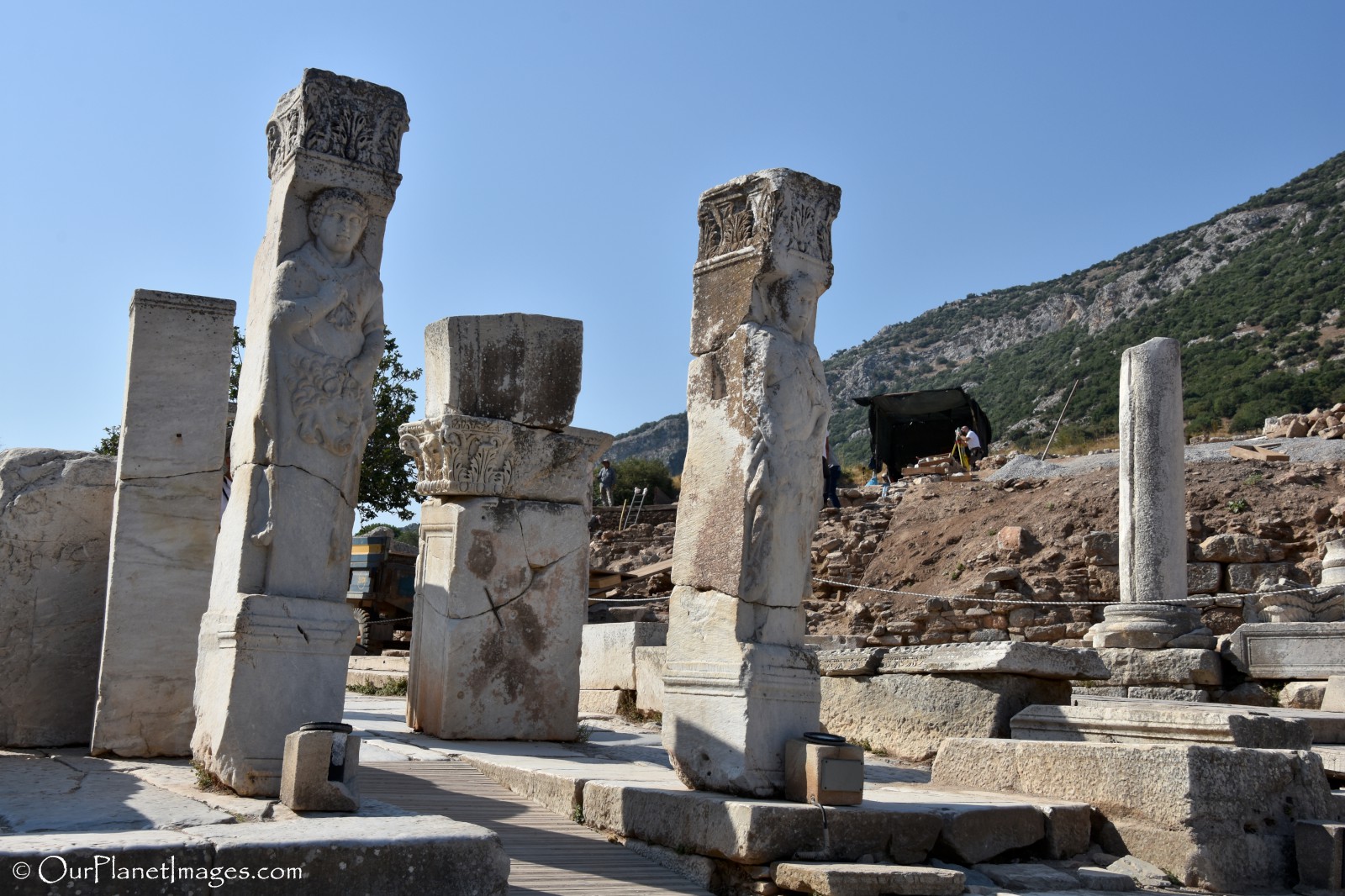
Memmius Monument and the Flying Nike
The Memmius Monument was built during the reign of Augustus by Memmius. On the right side of the monument there are relief statues of Sulla and Memmius’ father. The monument commemorates the Sulla’s conquer of Mithidates of Pontus.
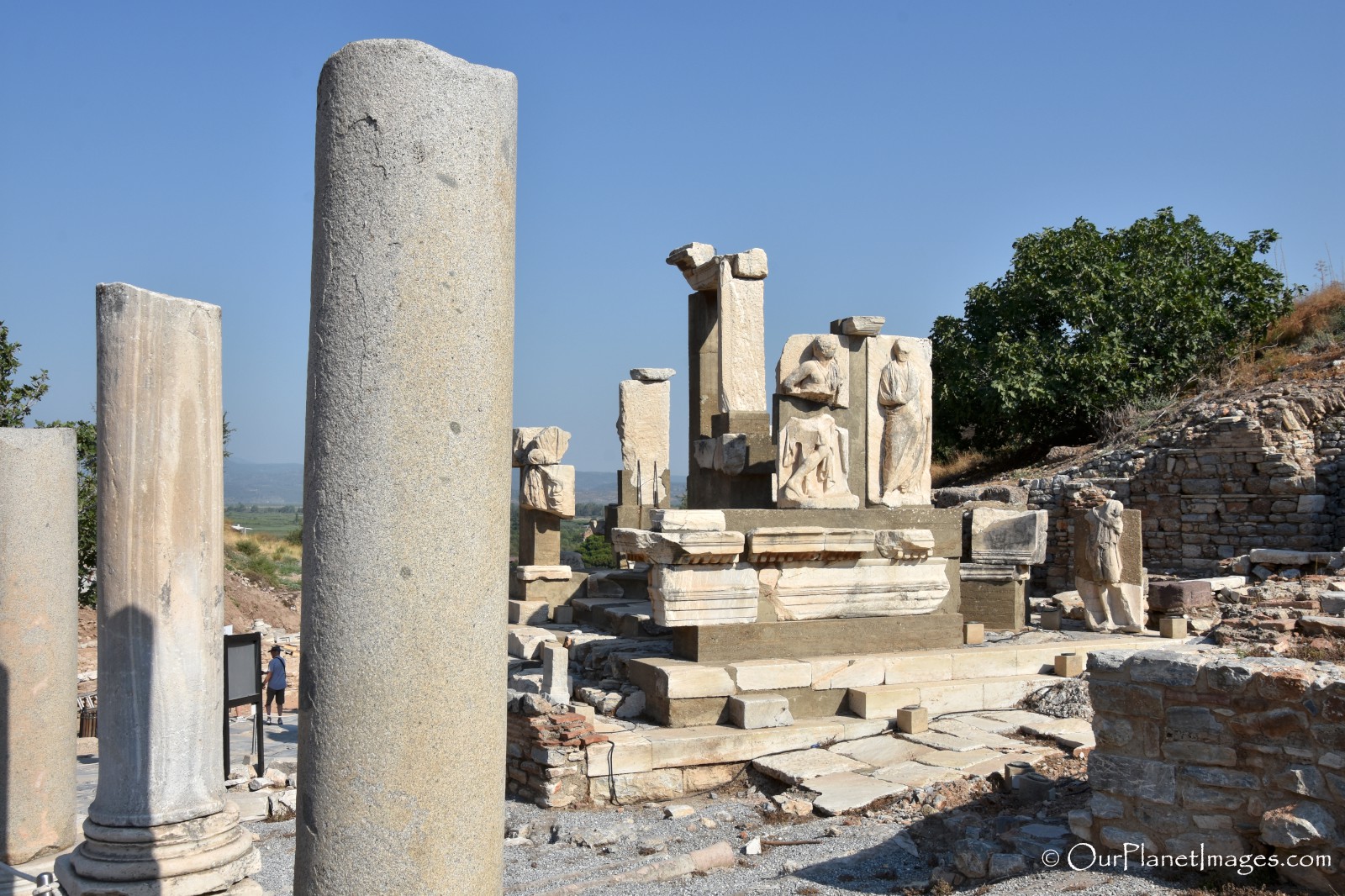
A relief statue of the Flying Nike is displayed near the Memmius Monument.
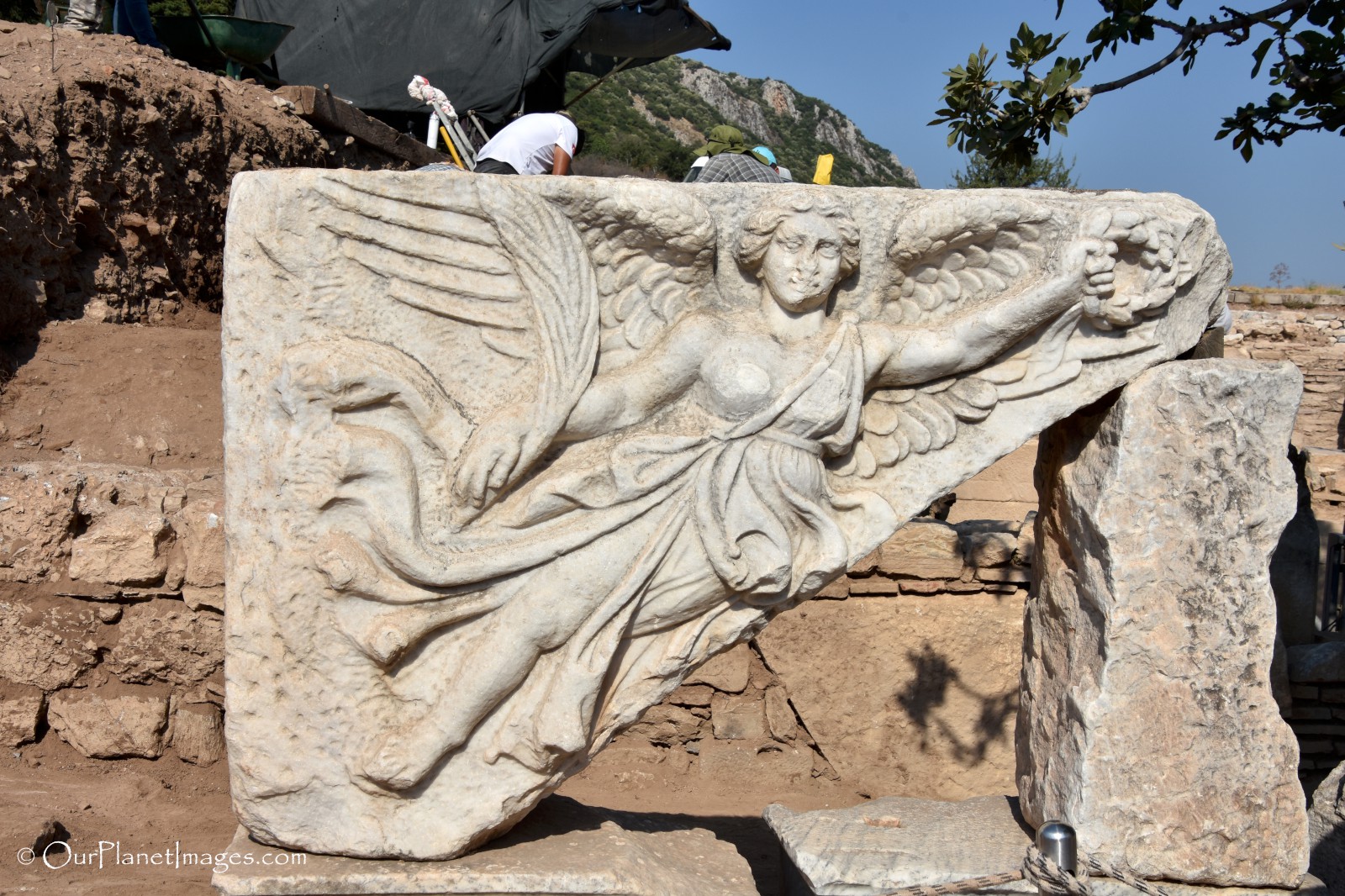
The Odeon
The Odeon was a small 1500 seat roofed theater that hosted plays, poetry readings, concerts and ceremonies during the Greek times. It was constructed around 150 AD by Publius Vedius Antonius.
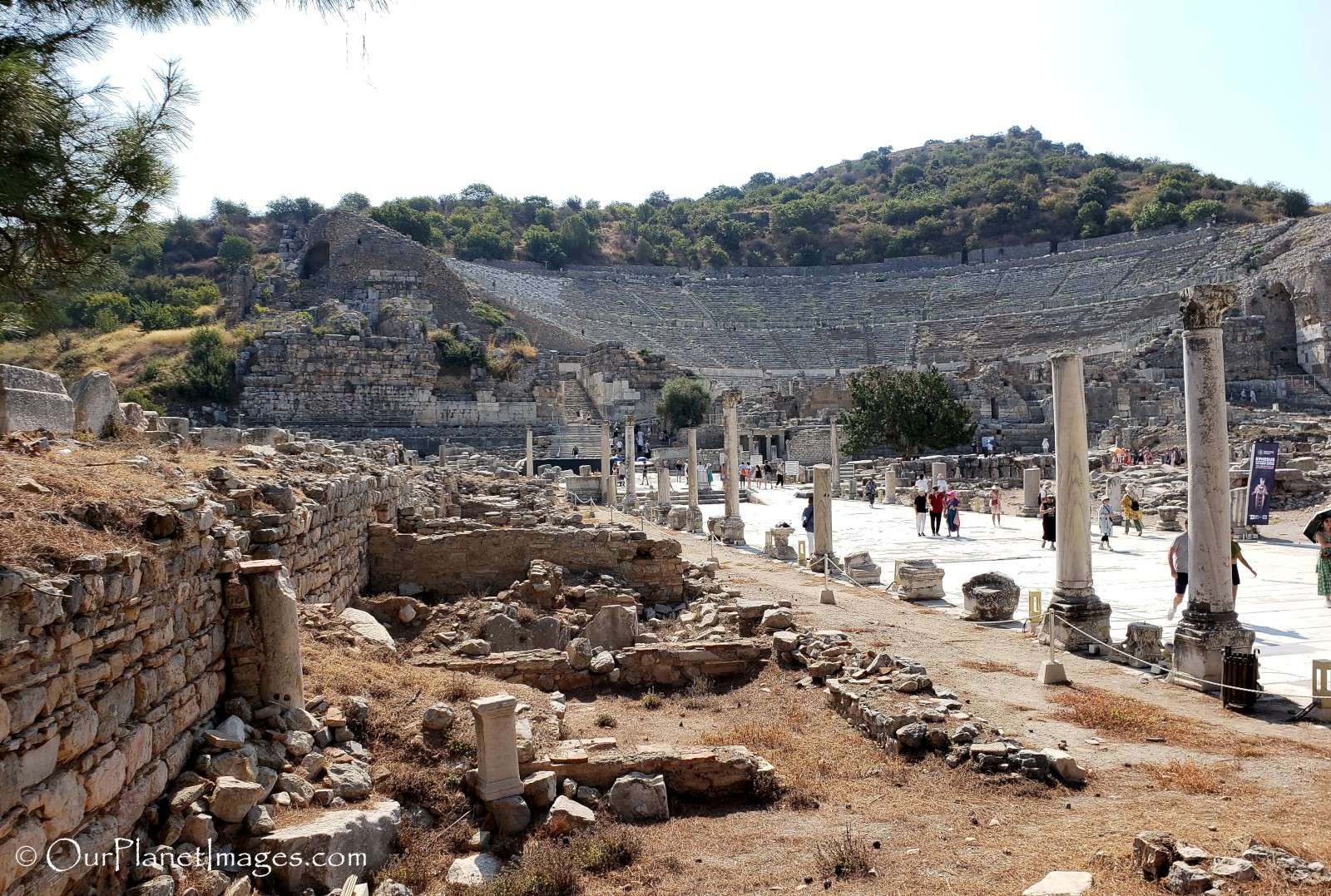
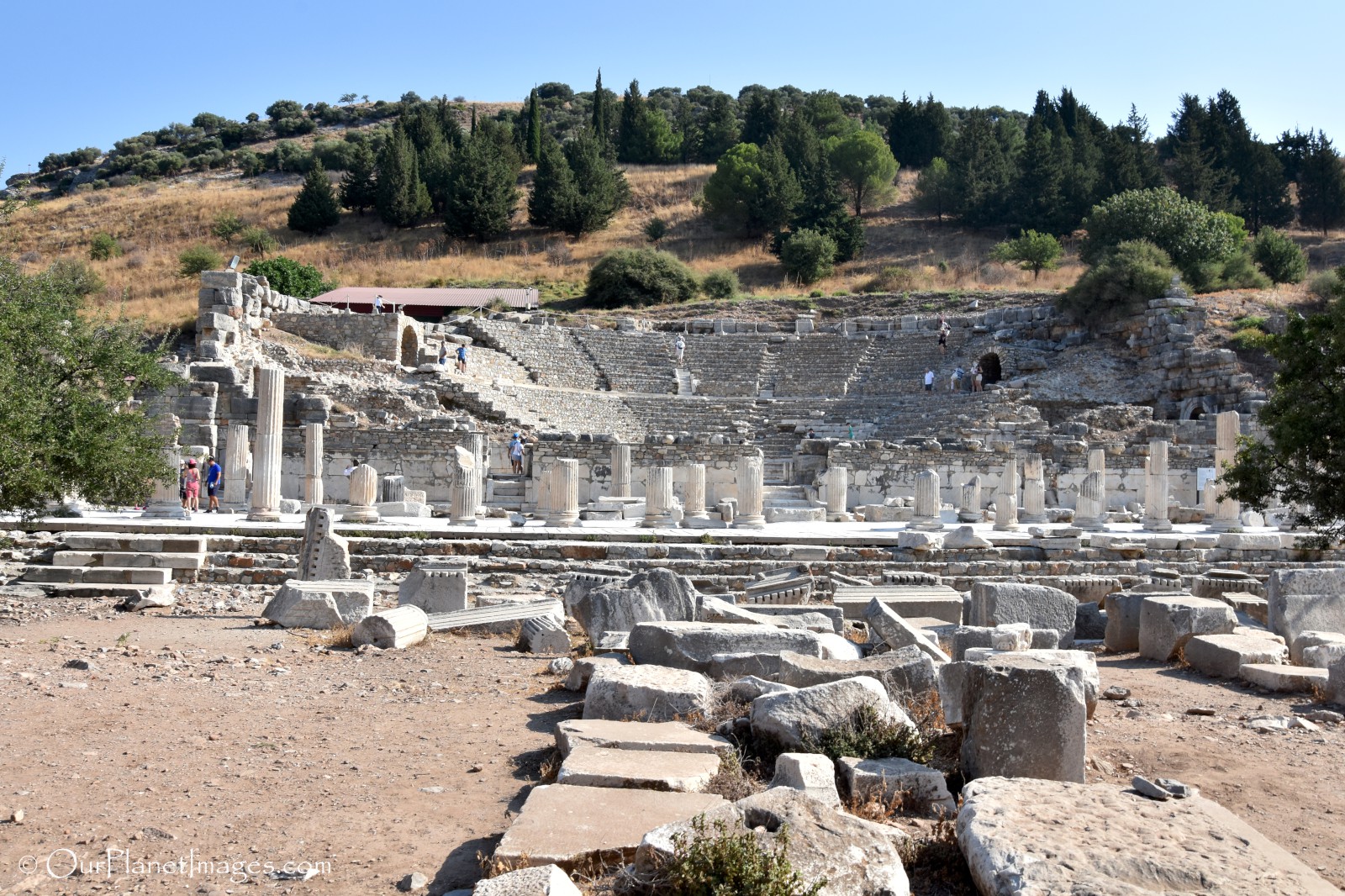
Baths of Varius
At the other entrance into the city was a bath complex that included cold, warm and hot rooms.
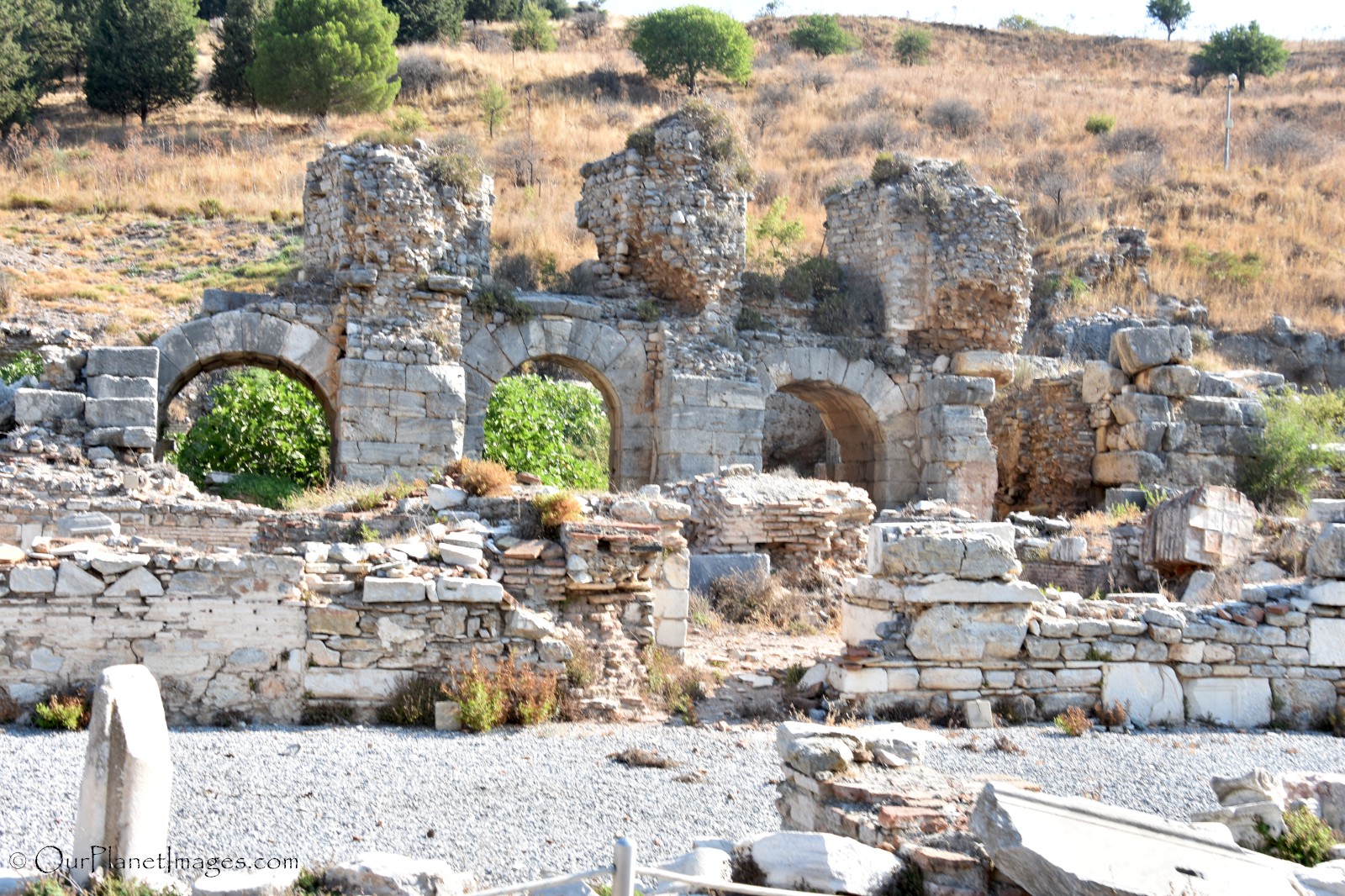
Undefined parts of the city
Most ancient ruins have lots of partial structures and broken rubble scattered across the site. Ephesus archeological site is no different, there are many fractional pieces of the ancient city but these pieces are interesting to see and they also provide a visual reference of how the city once looked. Some of these fractional pieces are categorized below.
Columns
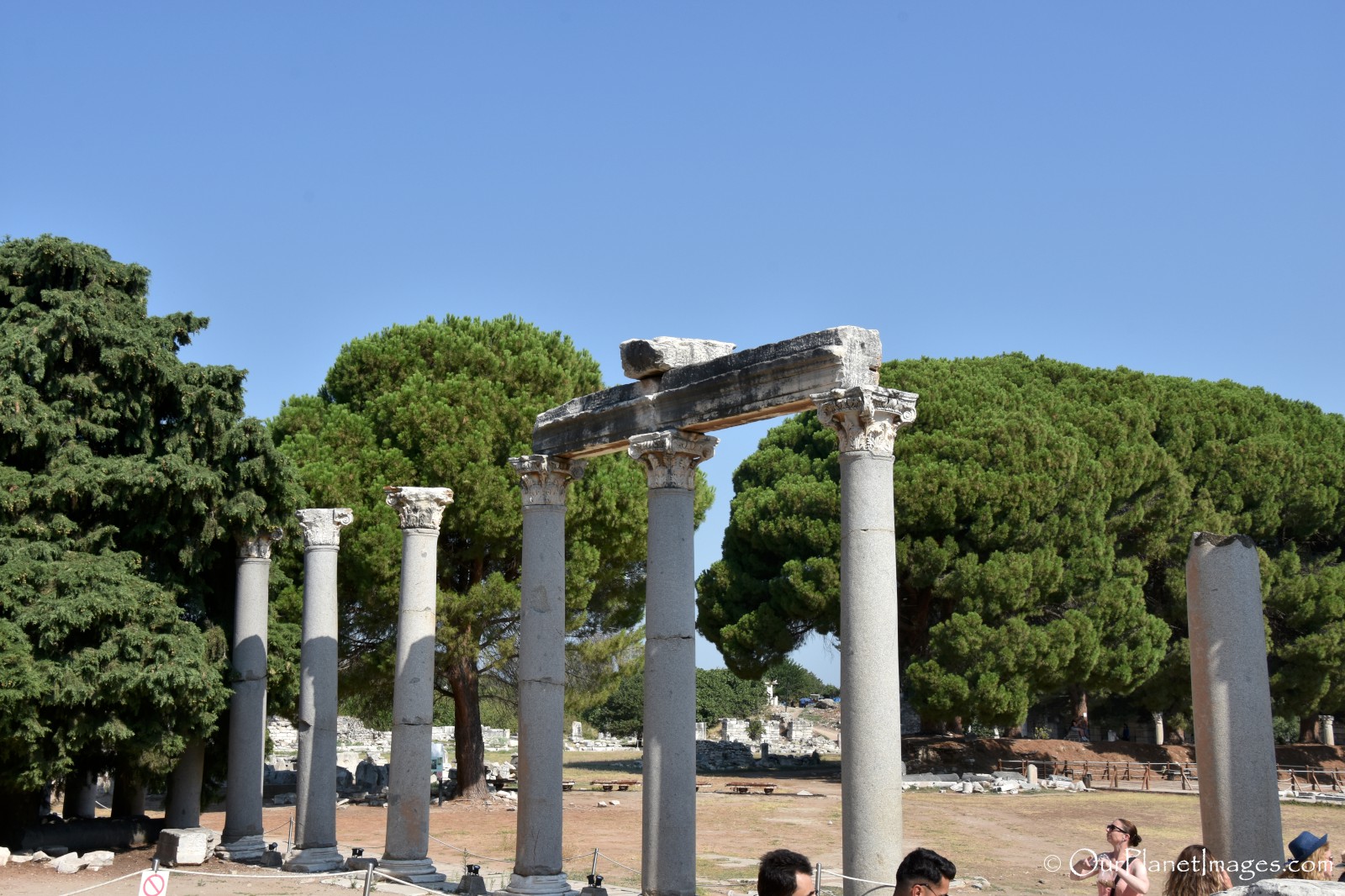
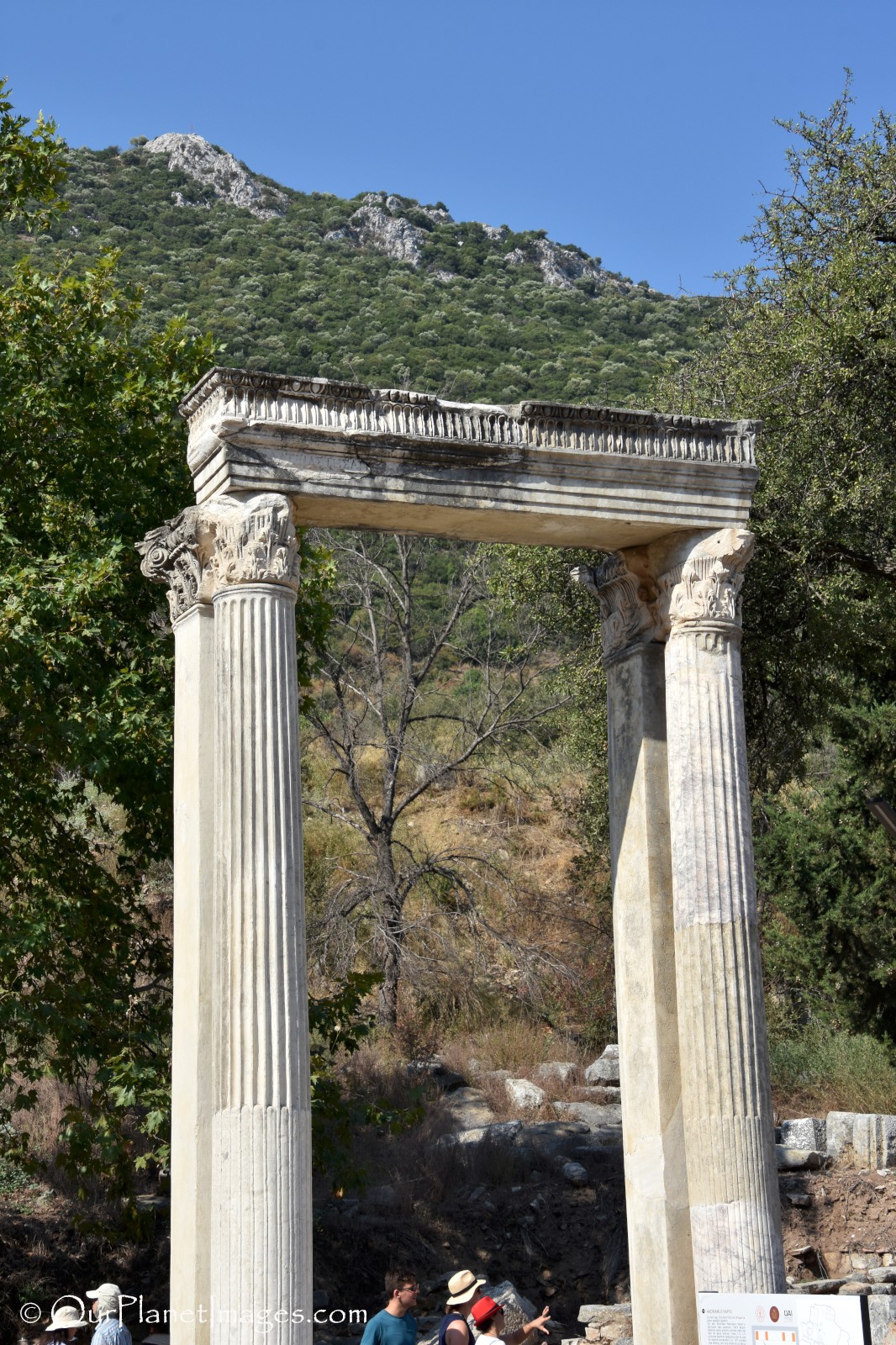
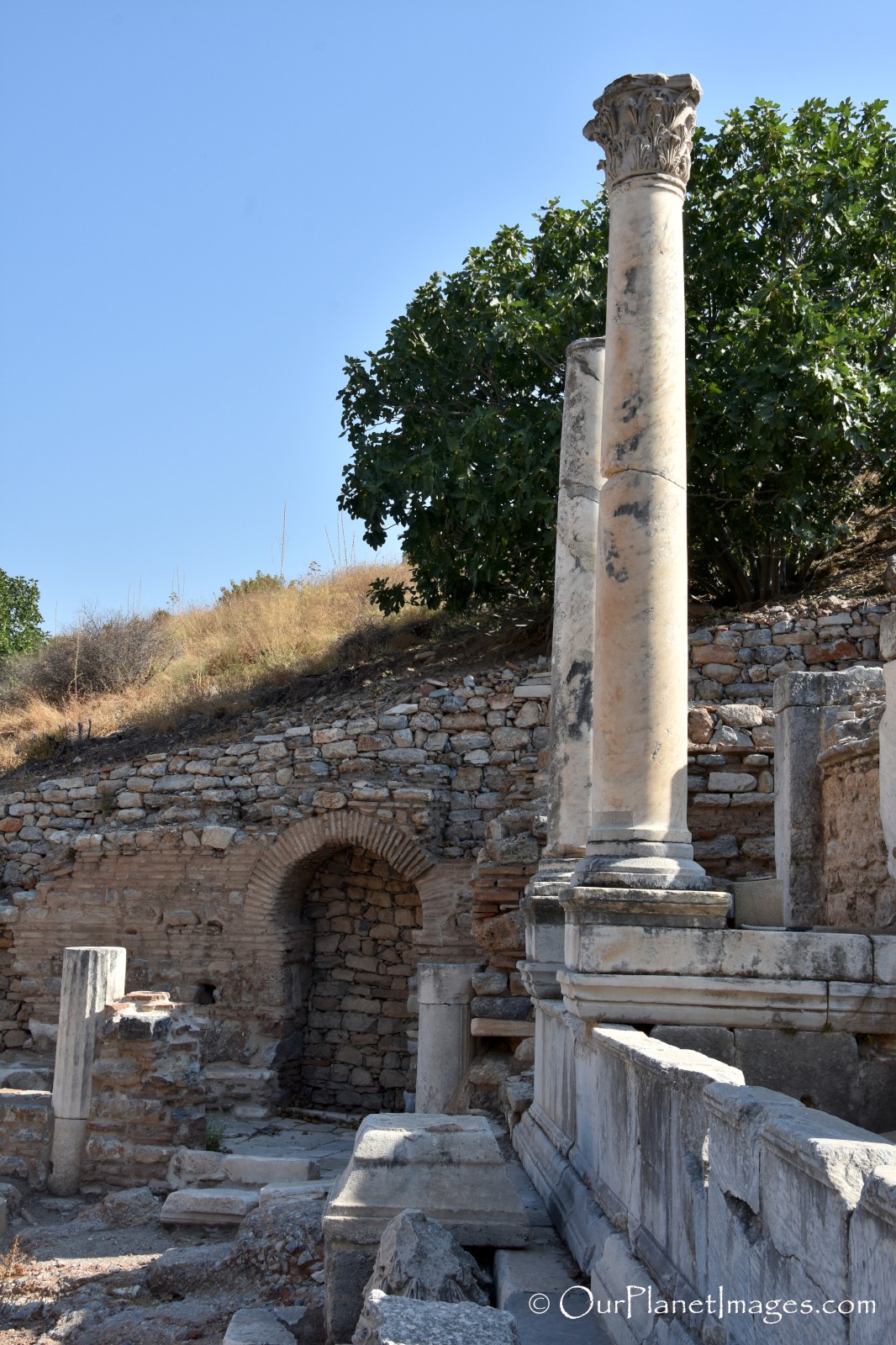
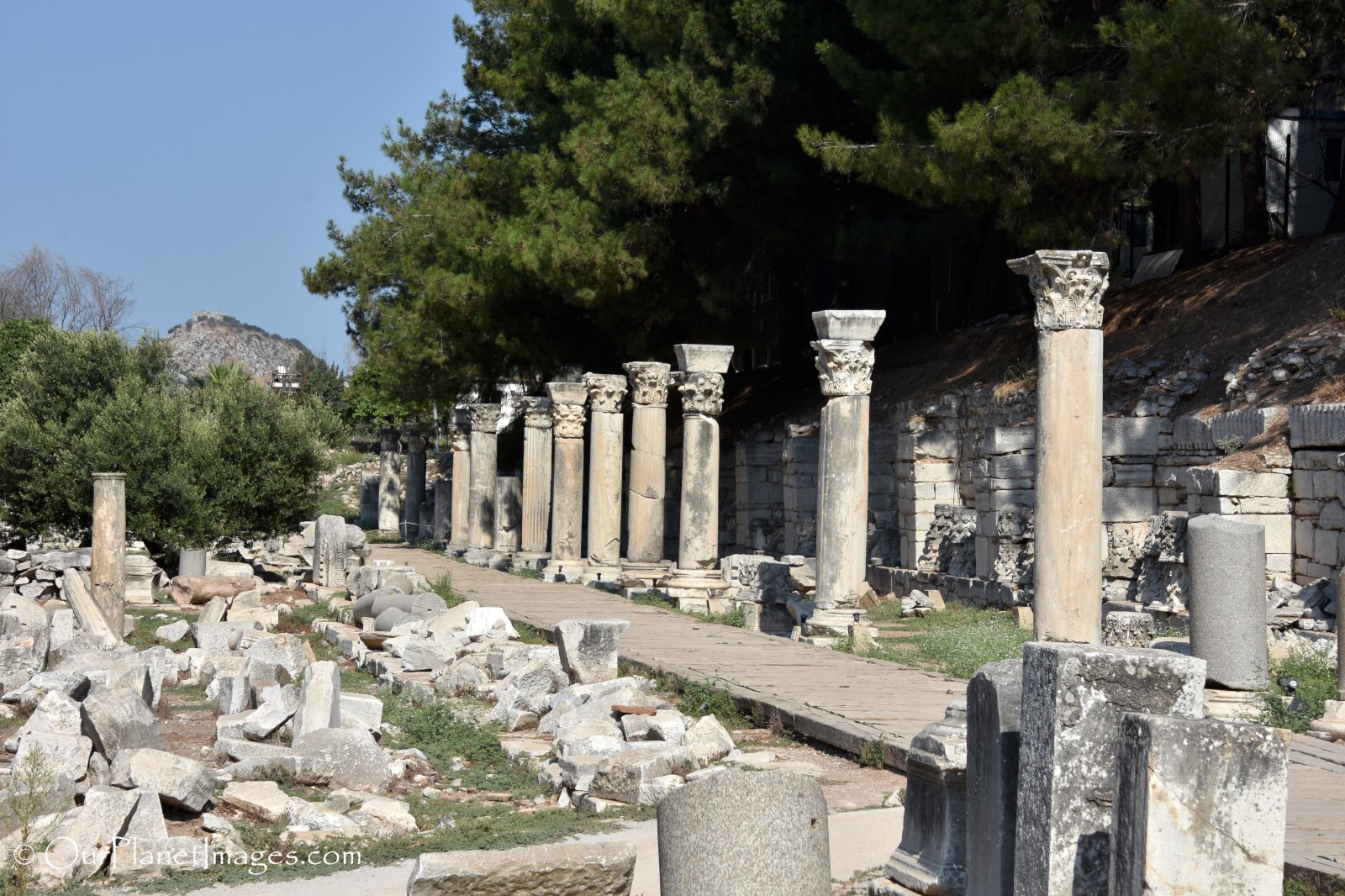
Statues and writings
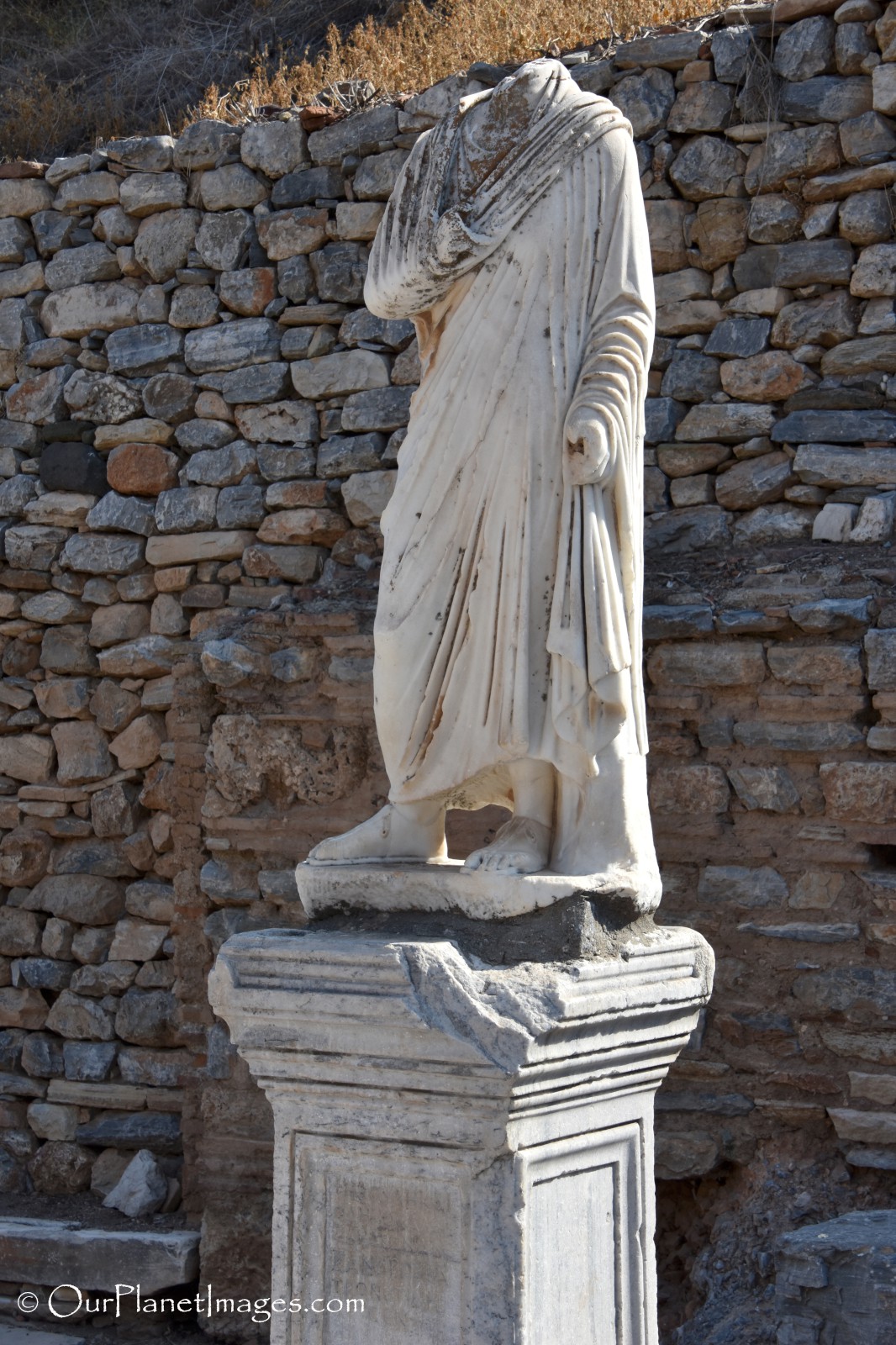
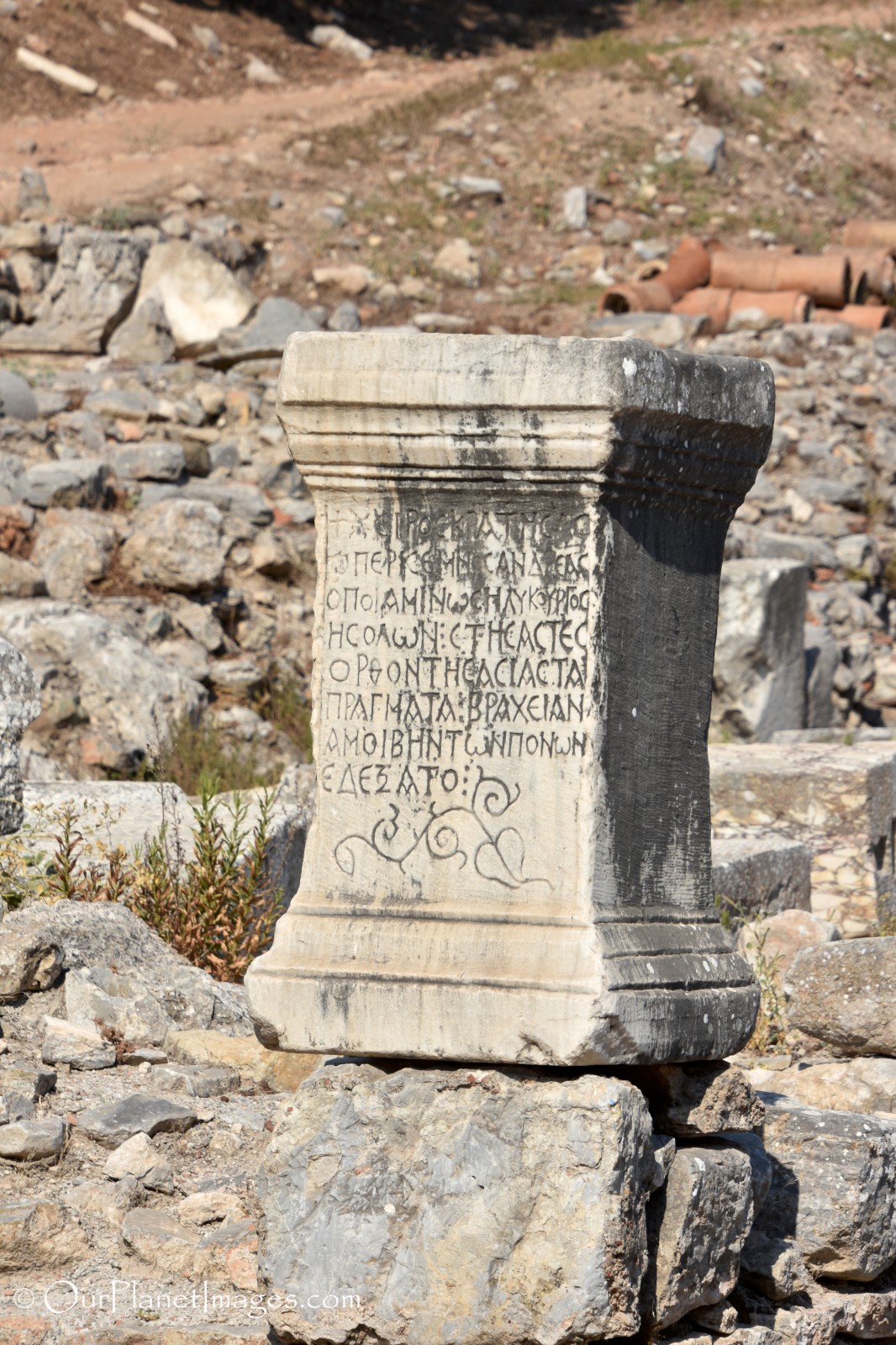
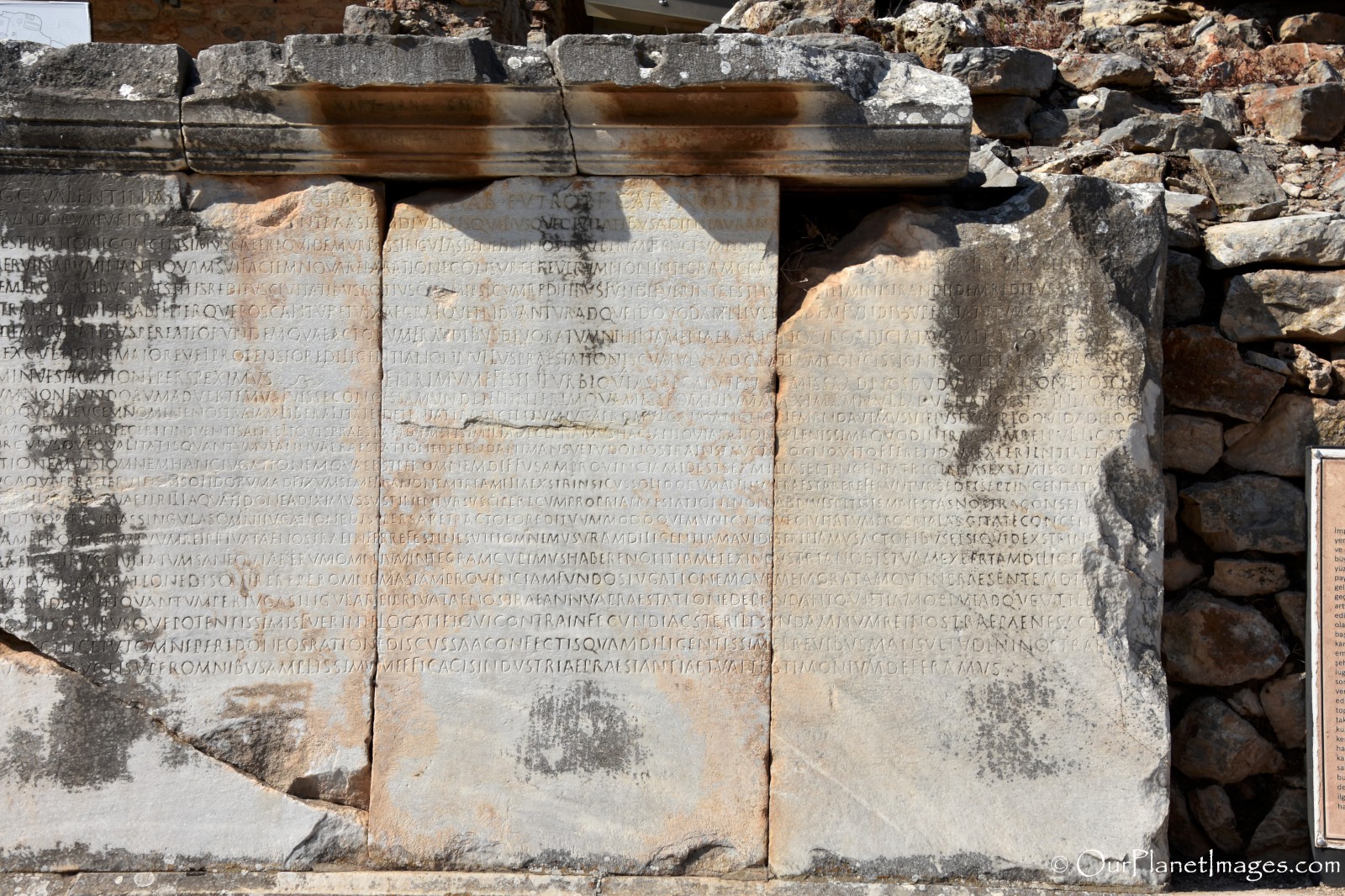
Sidewalks and entrances
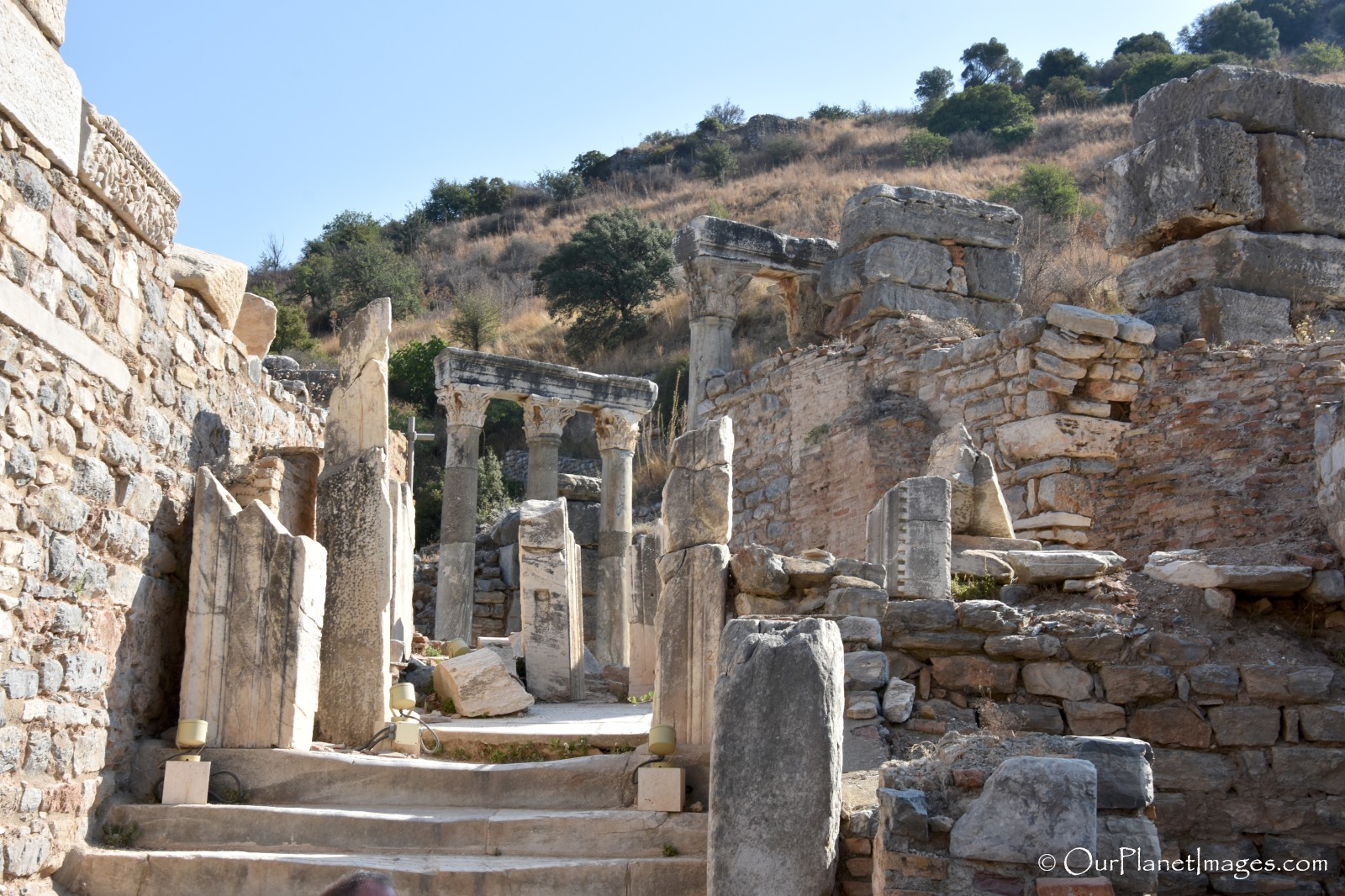
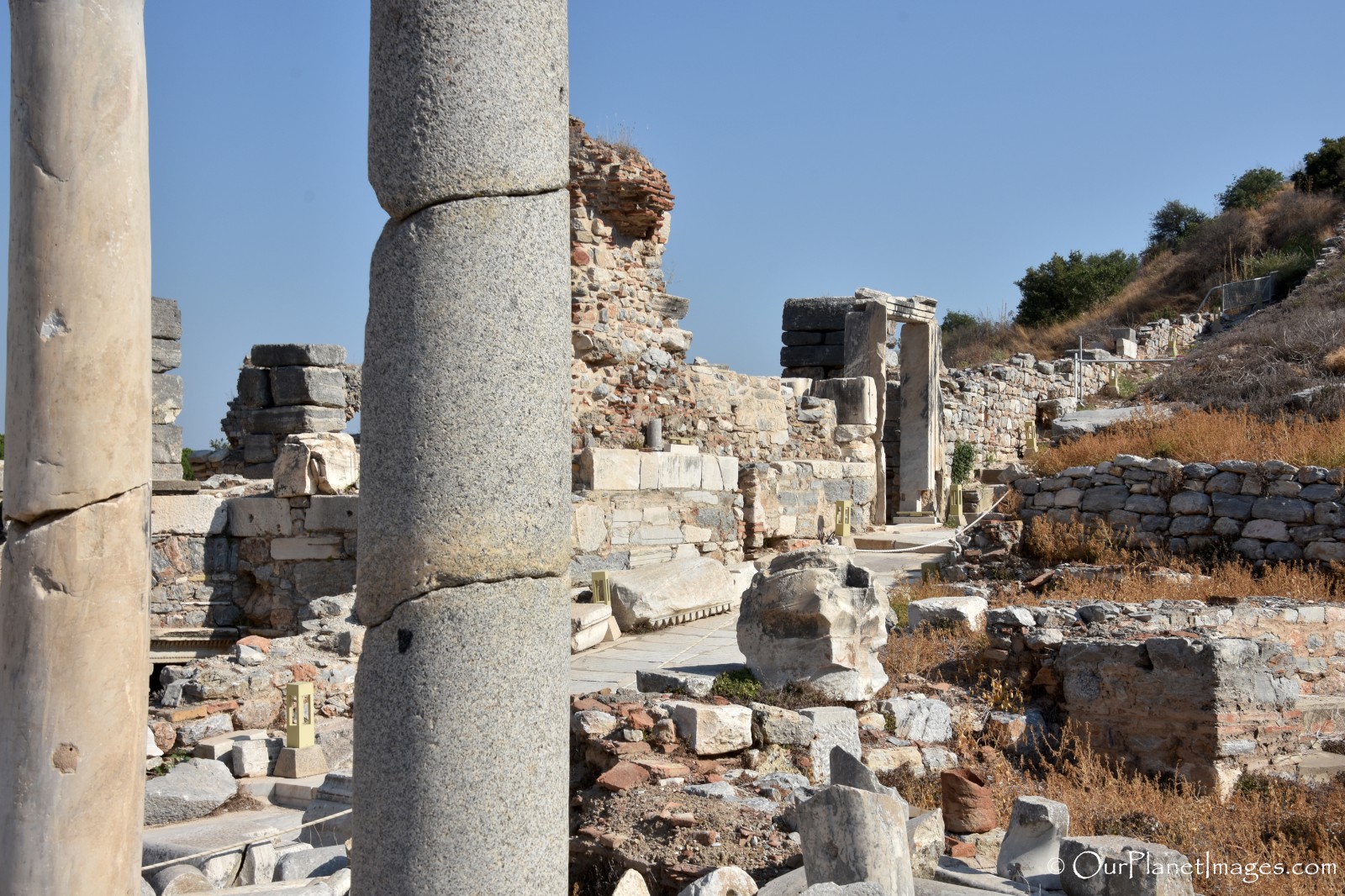
Broken Pieces
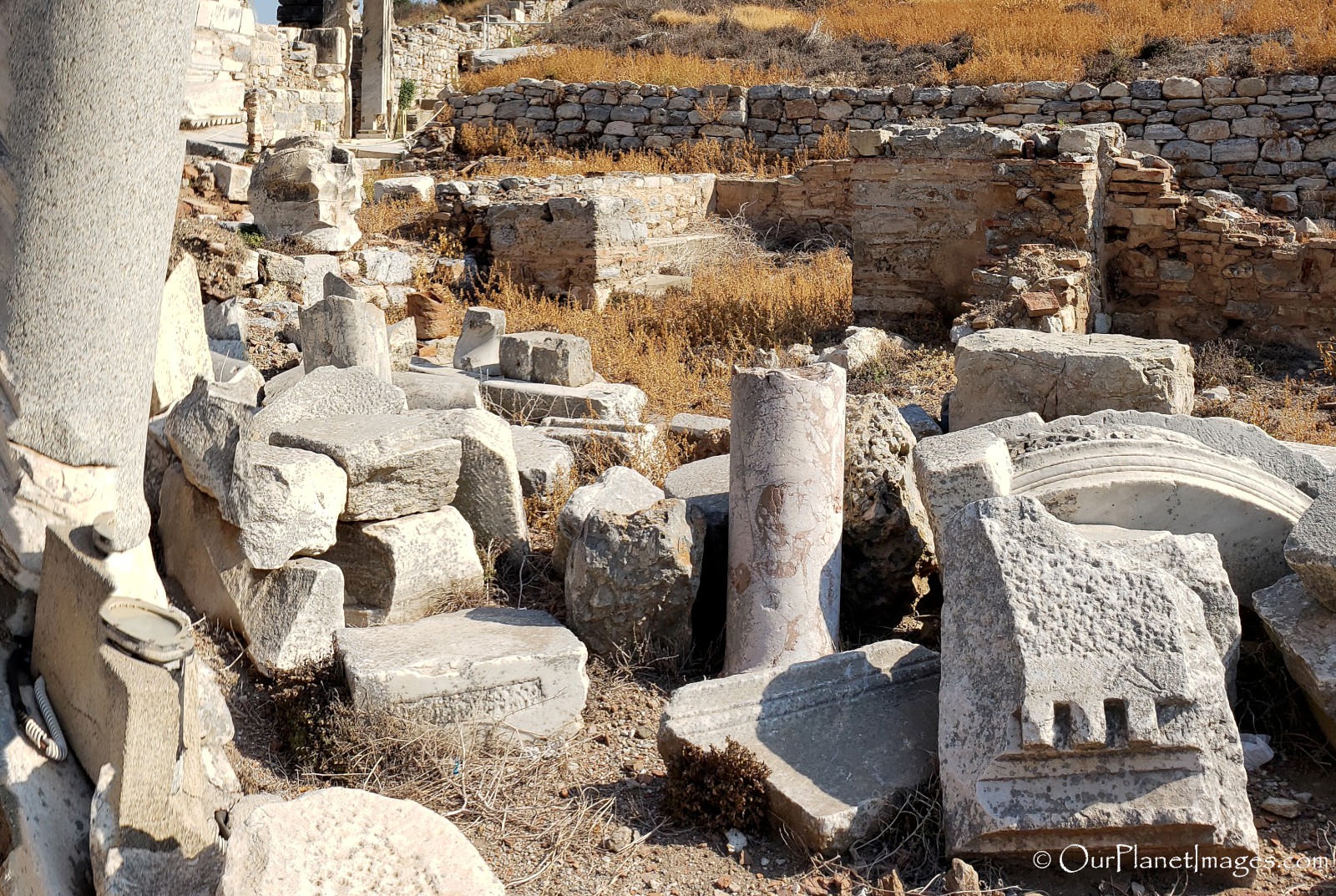
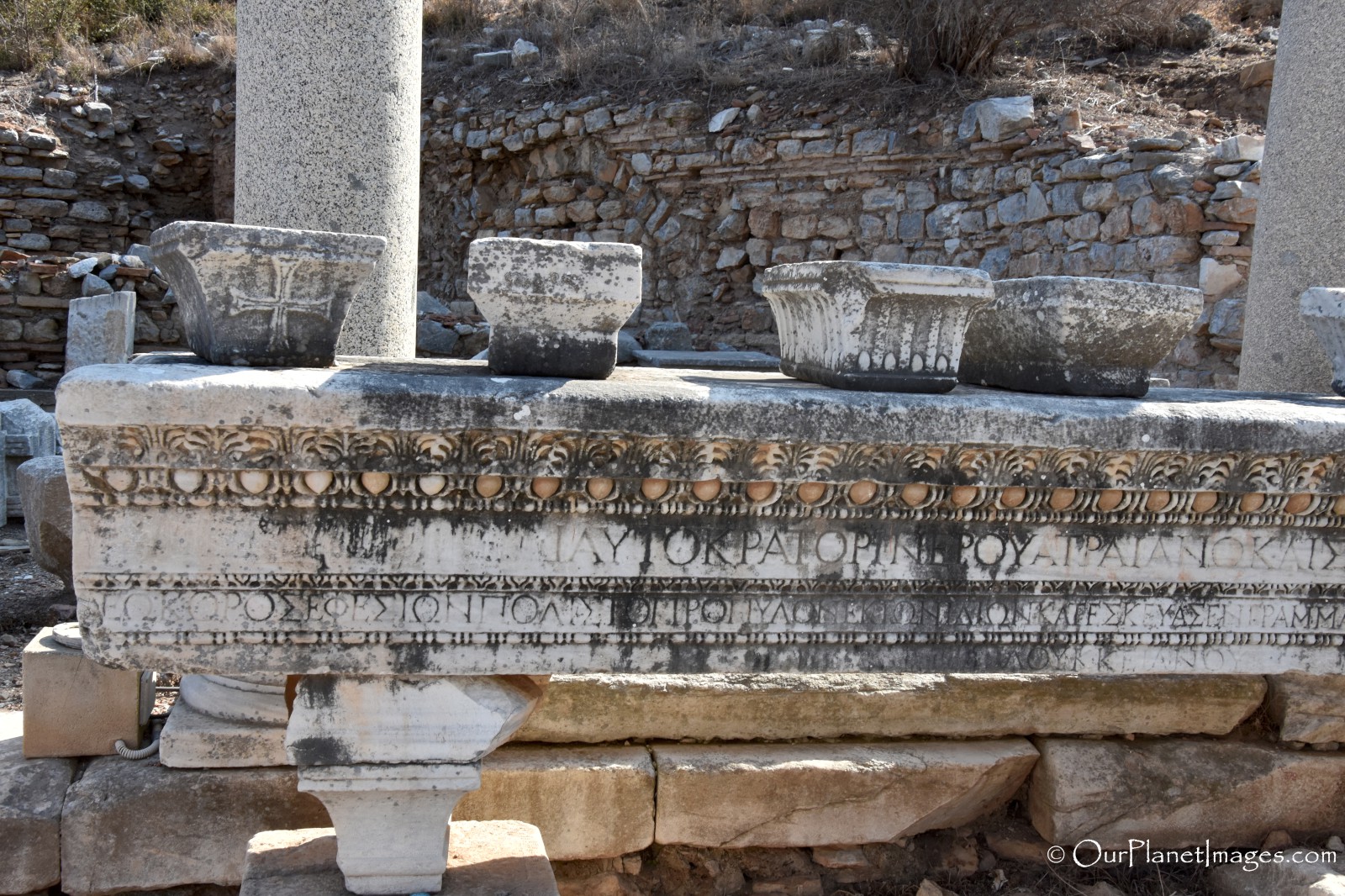
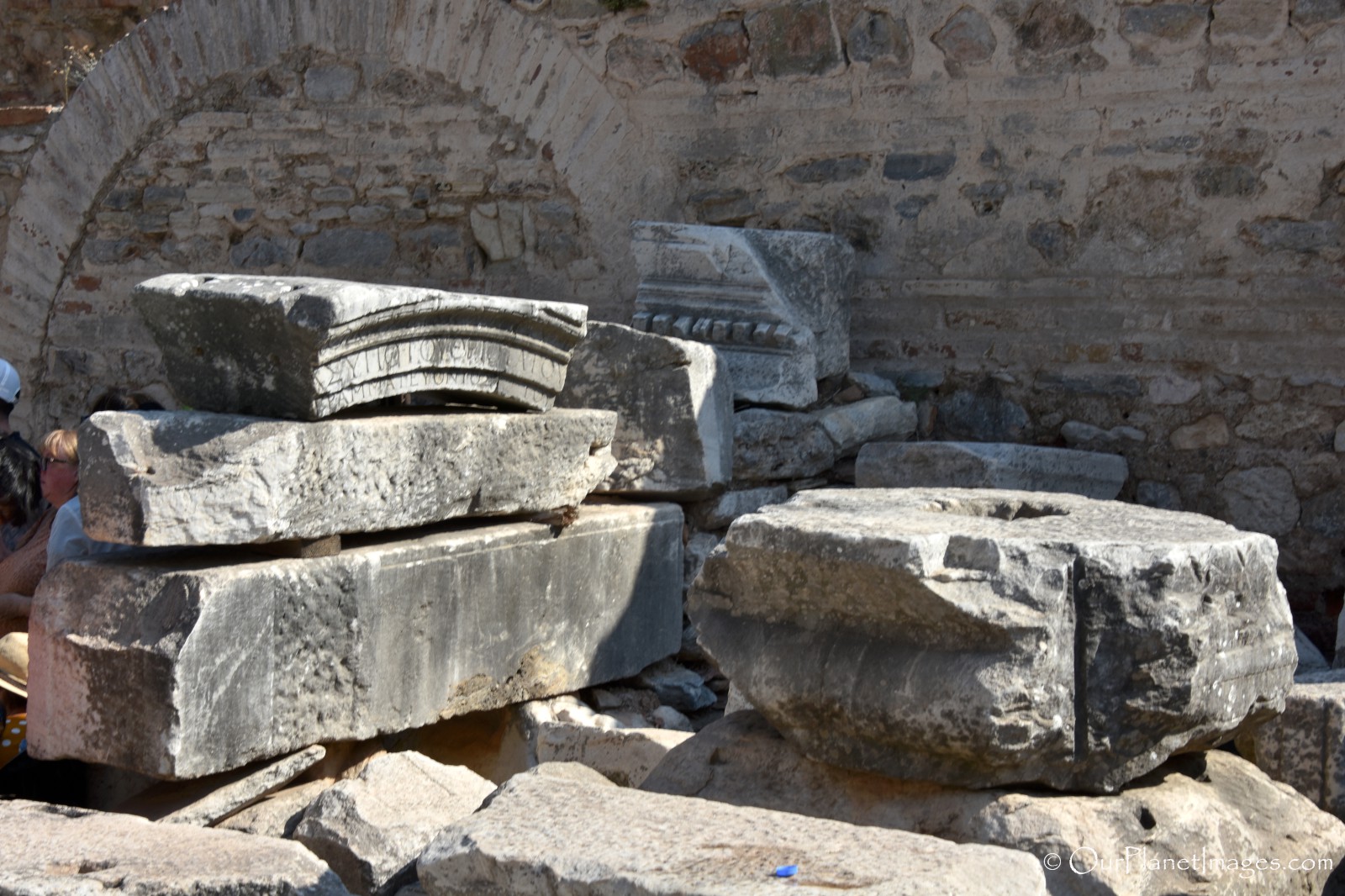
The Dust on My Shoes
Visiting ancient ruins is different than visiting most other tourist sites. Most tourist sites allow visitors to see lots of details of the site but normally there is only a small amount of the site remaining at an ancient ruin. Ancient ruins normally include a few poorly remaining structures that can be identified, fractional pieces of other structures and broken rubble scattered around the site. Ephesus is considered to be in good condition for an ancient ruin but it is still only a fraction of how the city really looked.
I visit ancient ruins for their historical significance and because they allow me to have a glimpse into past civilizations. By walking through ancient ruins I can imagine a city full of people walking the streets with Roman chariots rumbling past and street vendors selling their products.
I like to walk through the entrance gates into the city just like they did hundreds or thousands of years ago. It gives me a feeling of wonder just like it must have for a first time visitor when they entered the city.
I have heard about the city of Ephesus my entire life. All I knew about it were the stories that I had herd. Now I have a better idea of how the city actually looked, I have walked through the entrance gate into the city and down the main streets. I feel like I have a better understanding of the city and the lifestyle of the people that lived here.
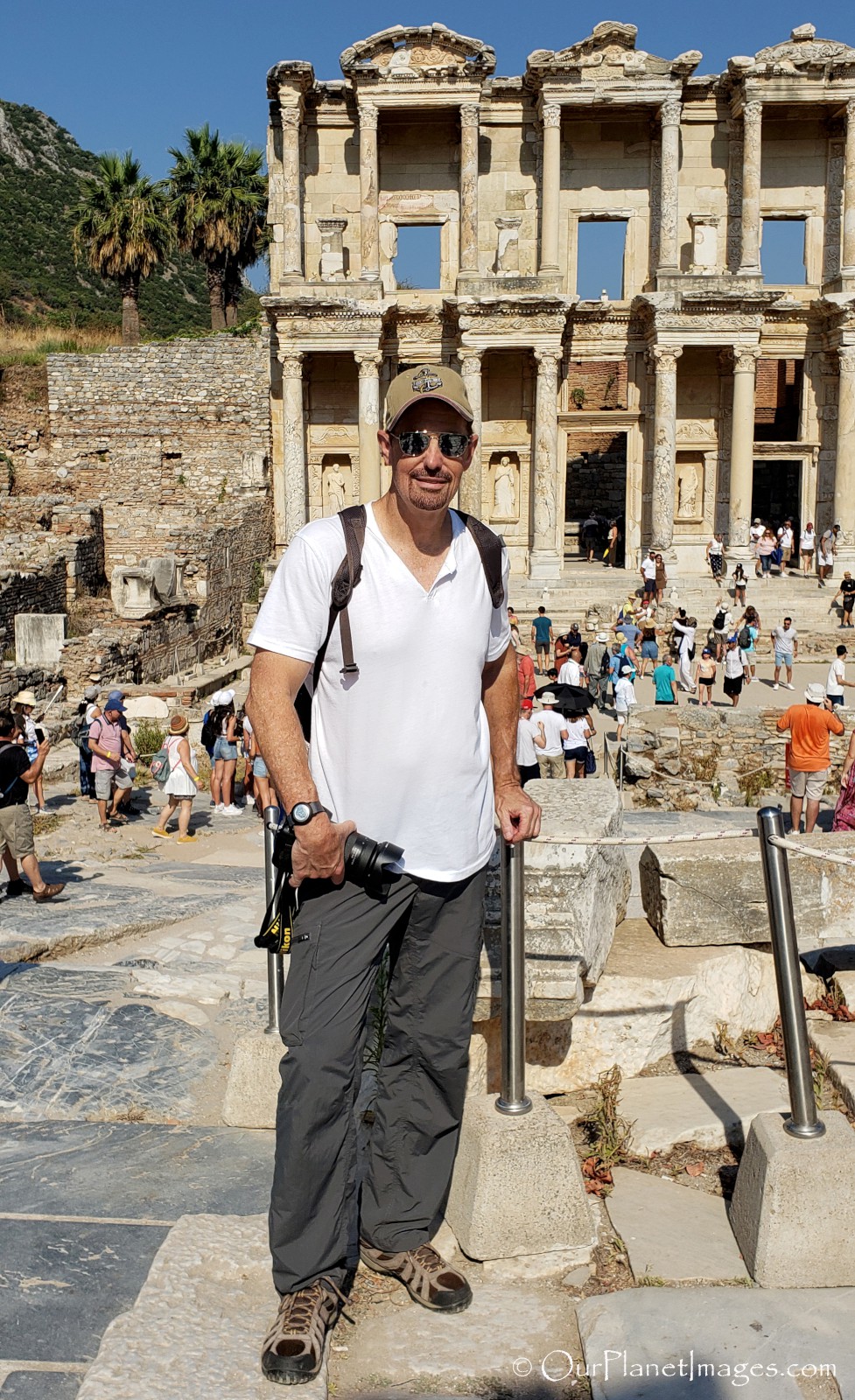
Visiting an ancient ruin is about taking a trip back in time to gain first-hand knowledge of the city and the culture of the people that lived there. Nothing can replace the knowledge of actually having been there!
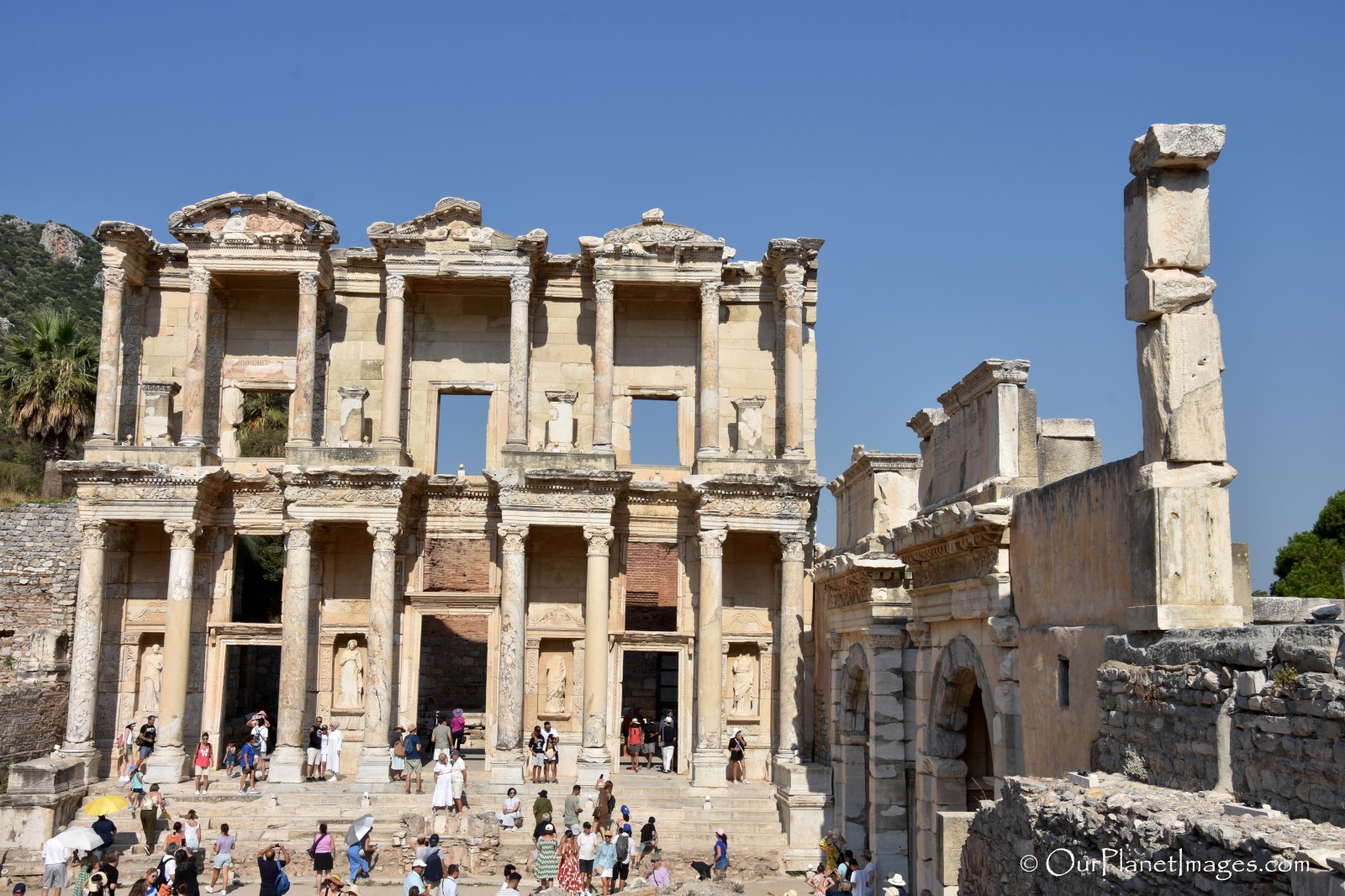
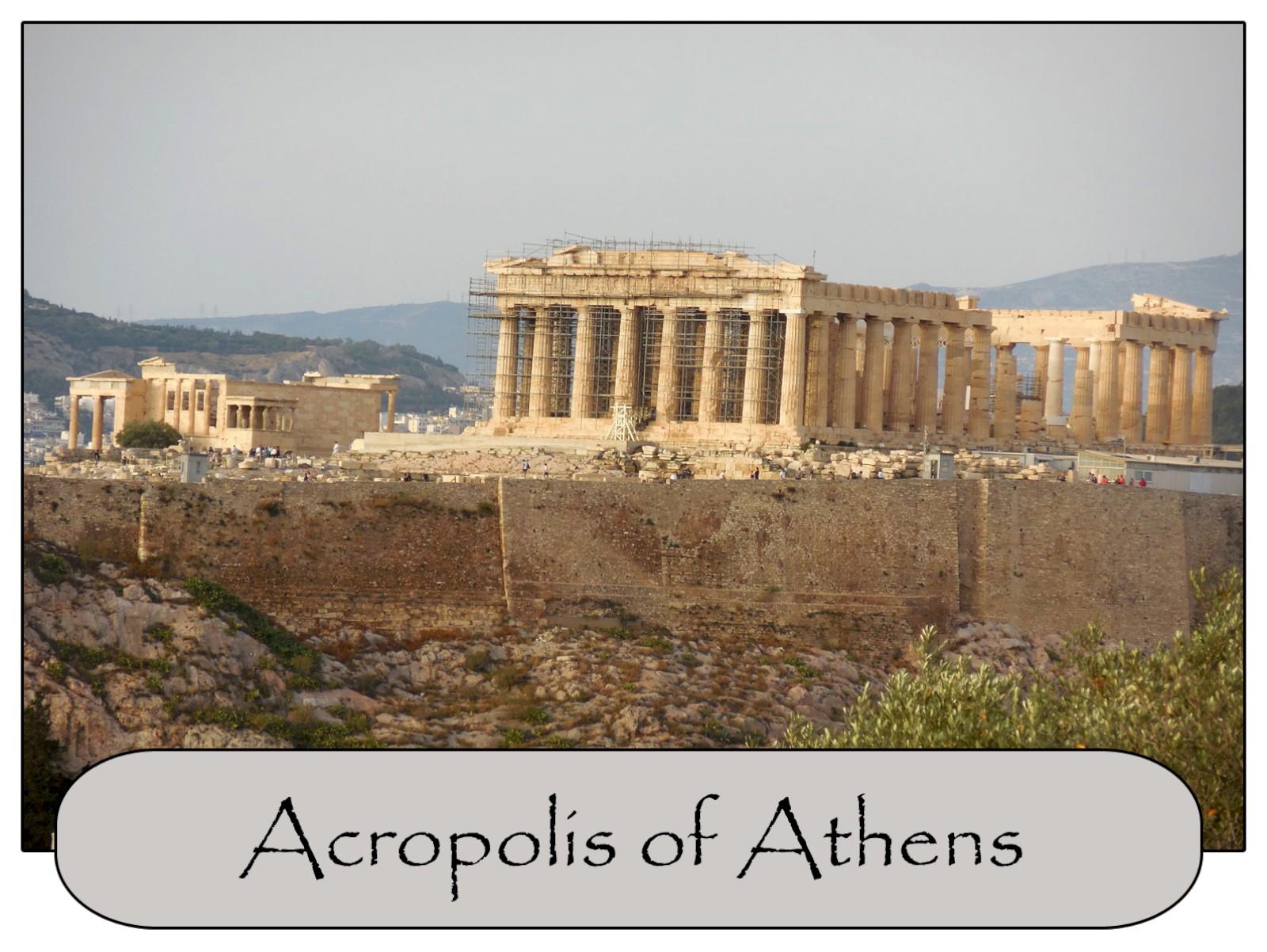
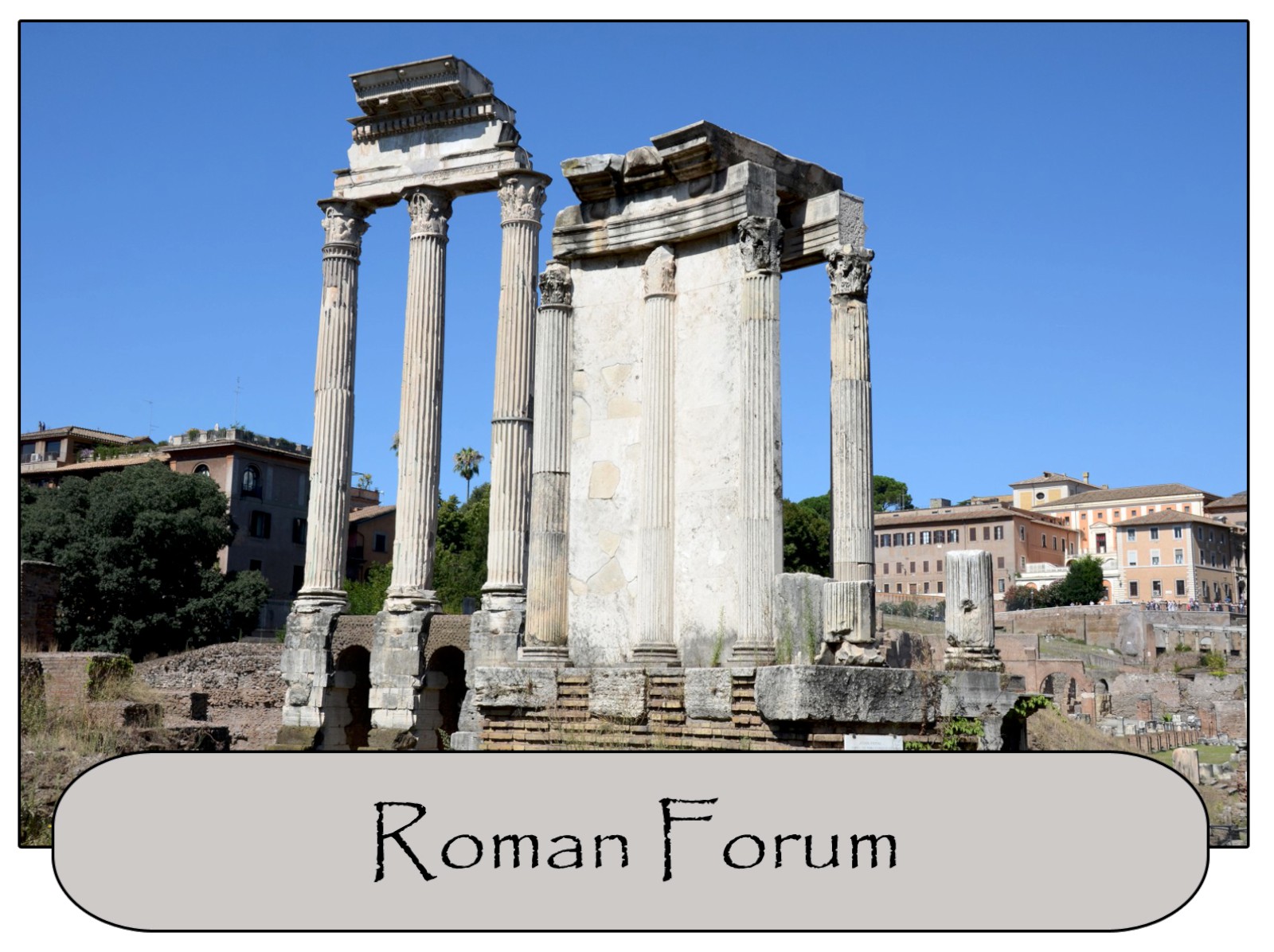
Yes, I agree with you. Visiting ancient cities is a valuable cultural experince. I will never forget standing on the Palatine Hill and looking at the ruins of ancient Rome, or walking through the ruins on Pompei. I appreciate where we came from and how difficult life has been from the people.
Ted, I have been to both of those places and they also left a lasting impression on me.